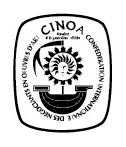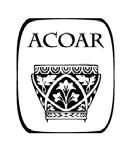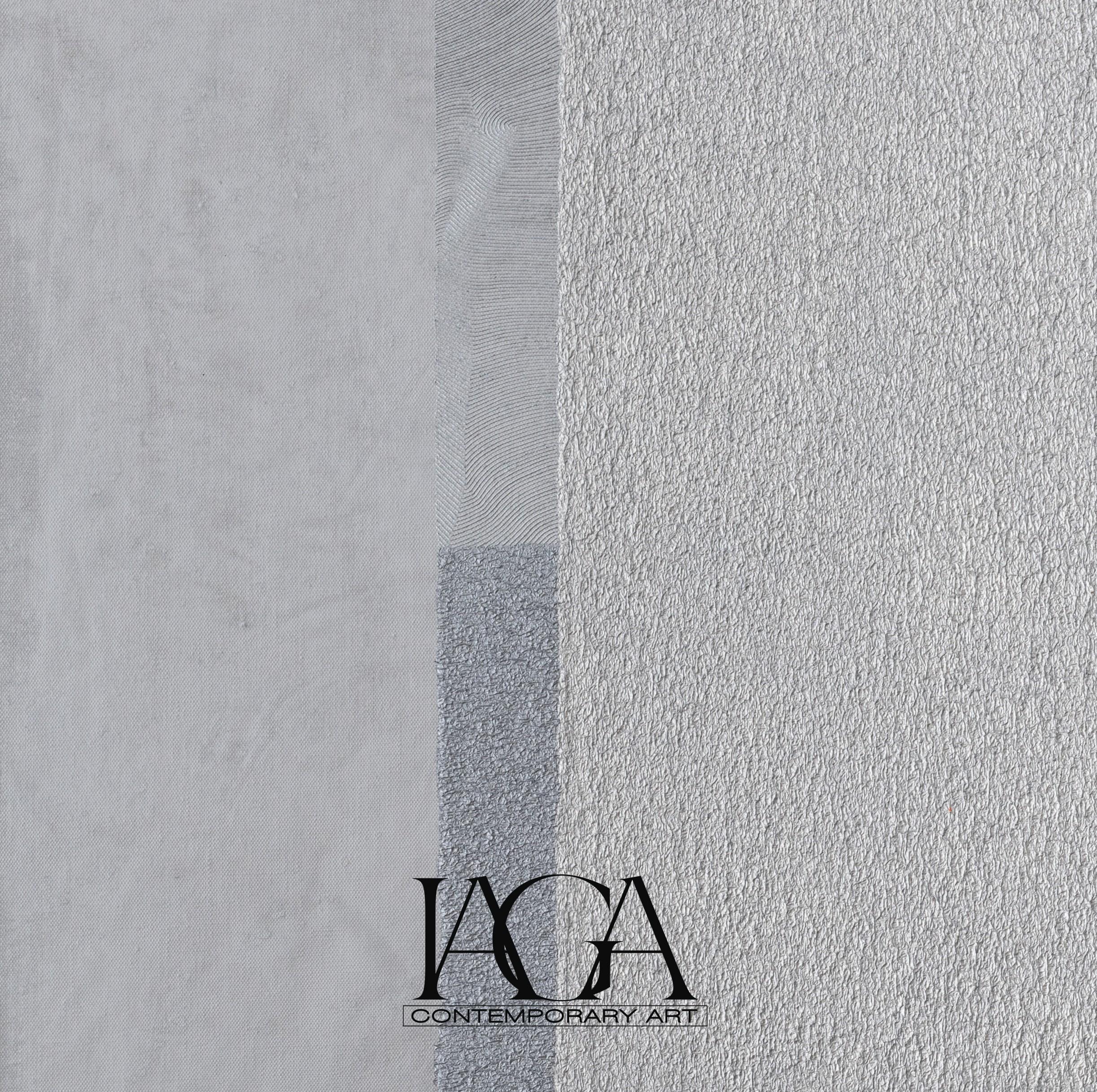




22 June - 29 July 2023
Curated by Ilaria Bignotti
Sguardo e Tempo
“Il dipinto non può vivere nell’isolamento. Ha bisogno di quello sguardo di un osservatore sensibile per potersi ridestare e sviluppare. Senza quello sguardo il dipinto muore”.1
Gli artisti vivono una profonda lacerazione: sanno che l’opera esiste solo nel momento in cui viene esposta allo sguardo dell’altro, si relaziona con lo spettatore, entra in dialogo con la sua percezione, la sua conoscenza, la sua esperienza, ma sanno anche che questo distacco tra l’opera e il suo artefice la espone al pericolo della sua trasformazione, se non della sua incomprensione o del suo fraintendimento, da parte del riguardante. Un rischio che Mark Rothko, al quale appartiene la frase in apertura, aveva dichiarato sin dal 1947 con la cosciente disperazione che la frattura tra opera e artista diventa perdita e irrimediabile cicatrice di una mancanza necessaria. Il tempo è l’elemento fondamentale. Durante il tempo necessario per l’ideazione e la realizzazione dell’opera, l’artista stringe un rapporto indissolubile con essa, la fa e sente propria e indivisibile da sé e dallo spazio nel quale essa prende forma. Il tempo successivo è quello del distacco, quando l’opera si deve distogliere dallo sguardo univoco dell’artista e inizia ad essere sottoposta ad altri occhi: del critico, del collezionista, della storia e del mercato dell’arte; in questo processo, l’artista inizia ad estraniarsi da essa, a sancire il suo doloroso distacco, affidandola all’altro. Poi c’è la vera partenza, l’addio dell’opera quando esce dallo studio ed entra in un nuovo ambiente, quello espositivo, quello pubblico, quello privato, quello itinerante di un percorso tra luoghi e tempi, lingue e culture differenti.
Una storia meravigliosa e dolente, una relazione mutevole e in continua evoluzione compone allora il triangolo che viene a delinearsi tra artista, opera, spettatore.
È la storia di ogni storia dell’arte.
Una storia che si presta molto bene a descrivere il senso del processo artistico e concettuale di Marcello De Angelis, al quale IAGA Contemporary Art dedica una nuova mostra personale negli spazi della galleria, proponendo una selezione di opere di recente e anche recentissima produzione realizzate con la nuova tecnica alla quale De Angelis sta lavorando da qualche anno: la “Mould Painting”. Questa consiste nella realizzazione di dipinti ottenuti con l’utilizzo di lastre di polietilene espanso che diventano veri e propri “stampi” con i quali stendere e stratificare l’acrilico sulla superficie della tela, ottenendo dei calchi carichi di memoria materica, campiture monocrome che vibrano al variare della fonte luminosa proiettata sull’opera stessa.
Un processo lento e molto delicato che si apre anche al caso, inteso come possibilità data dalla mancanza di controllo totale che De Angelis può esercitare durante il calco: così l’artista sperimenta, lentamente, giorno dopo giorno, cosa avviene in questa lavorazione del colore che si dispone sulla superficie “stampata” da superfici a loro volta già esistenti, scelte in base alla texture che le caratterizza e che sarà così trasposta sul campo pittorico.
1Mark Rothko, testo tratto dalla rivista “The Tiger’s Eye”, n. 2, 1947, p. 44.
Se la fatalità della scoperta del possibile stampo-foglio di polietilene può essere repentina – quando sono stata in studio visit, per esempio, De Angelis mi ha mostrato la pellicola di PVC di rivestimento caratterizzata da ritmiche increspature che, mi ha detto, hanno attratto subito la sua attenzione e lo hanno portato a sperimentare anche questo elemento plastico quale strumento per i suoi calchi pittorici – il processo di realizzazione è poi lento, anche lentissimo: l’artista lascia che ogni livello cromatico si stratifichi e solidifichi sul supporto, verificando come l’incidenza della luce determini il diverso declinarsi del colore sulla tela. Disegna, prima ancora, elaborati progetti per prevedere come avverrà la disposizione delle parti compositive, dalla disposizione dei colori alla traccia dei segni che squadrano e secano il dipinto, numera i vari elementi che compongono i suoi dittici e polittici, dato che la partitura ritmica è un altro aspetto fondante del lavoro di De Angelis. Il tempo segna allora la materia pittorica nelle sue ritmiche tracce e impronte lasciate sulla superficie dell’opera e si articola nei dipinti pensati come un’armoniosa composizione di tavole iconiche: giocando sul tema del quadrato, del rombo e del rettangolo che storicamente avvicina l’opera di De Angelis con quella delle grandi avanguardie del Novecento, da De Stijl al Suprematismo, dal problema del colore nel Pointillisme e nel Divisionismo alle tavole ottiche e segniche degli anni Sessanta, dal concretismo alla disseminazione dell’opera nello spazio, sino alla grande astrazione d’Oltreoceano, l’avventura mistica di Barnett Newman, il rigore assoluto di Ad Reinhardt, i contrappesi cromatici di Frank Stella. Troviamo eco di tutto questo nelle sue opere di grandi dimensioni, intitolate “Squares” (2022) e concepite di forma romboidale, come tavole dove diversi colori, molti di questi nuovi per il linguaggio di De Angelis (i rossi, gli arancioni, i verdi), si dispongono a trasformare la percezione delle geometrie, rendendole isole di un oceano di sperimentazione pittorica. L’occhio deve quindi compiere lenti percorsi di avvicinamento, dopo la folgorazione della bellezza percettiva, per cogliere tutte le variazioni e le pulsazioni ritmiche, compositive e cromatiche che la pittura attenta di De Angelis sa suggerire. Accade qualcosa di simile anche nelle due opere dal titolo “Stripes” (2022), che come esplicitamente dichiarato da De Angelis rievocano le “zip” centrali nei dipinti di Newman, campi visivi dove lo spettatore è immerso con lo sguardo e anche con il corpo, diventando quest’ultimo veicolo di un percorso trascendentale di visione contemplativa. Anche in questi ultimi lavori, concepiti come dittico, De Angelis ha sperimentato l’ingresso di nuove declinazioni cromatiche quali l’arancione e il verde, colori squillanti che hanno messo a prova il suo alfabeto linguistico e che danno risultati sorprendenti in termini di vibrazione luminosa.
Parimenti negli “Innesti” (2022) l’artista si pone la sfida di utilizzare un nuovo colore, un rosa brillante e cangiante: ne risulta una efficace fusione tra la componente di meditazione spirituale offerta dal monocromo, che muta e si riverbera nello spazio della visione – un monocromo rosa che immediatamente rimanda a Yves Klein, maestro al quale De Angelis, per sua esplicita dichiarazione, dedica anche “Saut dans la Vide” del 2021-2022 al quale torneremo – e la componente più razionale che vede l’artista “incidere” piccole linee blu scuro nel campo visivo, secando la monocroma apparizione del rosa.
Dicevamo, Yves Klein: il grande dipinto sopra citato, “Saut dans la Vide”, riluce di tutte le potenziali sfumature dell’argento – un colore molto caro a De Angelis, ricorrente anche negli applauditi cicli precedenti realizzati con la tecnica detta Injection Painting – e al centro accoglie un monolite pittorico blu: il colore si addensa sul lato orizzontale alto dell’opera e nel colare al centro dell’opera man mano si diluisce, incontrando il fondo argentato, per perdersi in minuscoli
frammenti. Possiamo vedervi un innesto acquoreo, una preghiera cromatica, una cascata orientale: è la visualizzazione del pensiero dell’artista che prende il volo attraverso il dipingere? O lo sprofondare della materia nel concetto che è alla base di ogni creazione?
Il titolo rimanda a uno dei più misteriosi lavori di Klein, il suo gettarsi da una finestra, un suicidio che è in realtà uno spiccare il volo, dato che la fotografia in bianco e nero che ritrae la performance mostra solo l’artista nel vuoto, nessuno al di sotto ad attutirne la caduta. L’arte non si salva da sé stessa.
Parallelamente a questi riferimenti pittorici, per De Angelis un’altra affascinante fonte di ispirazione è l’architettura, o meglio, i segni lasciati dalle fondamenta – o da ciò che rimane di queste – dell’architettura nella terra: le tre tele dal titolo “Fondamenta” (2022) sono variazioni seducenti sul nero, che sovrapponendosi e articolandosi in rettangoli intrecciati, creano un reticolo di immagini geometriche concentriche, vibrando verso l’esterno del campo visivo e addensandosi in un possibile nucleo. Il nero, altro colore sapientemente dosato dall’artista nel suo mescolarsi con il bianco e ancor più i grigi e gli argenti, è una dimensione centrale anche di un altro lavoro, un grande dipinto dove la nerezza si incontra con la doratura, assecondando la formula compositiva di “Saut dans la Vide” che abbiamo poco sopra analizzato. Qui, il contrasto tra due colori per antonomasia simbolici dell’assoluto, oro e nero, è ammaliante e chiede una lenta, silenziosa contemplazione.
- Impronte e tracce
“L’impronta esclude ogni distanza dal suo referente, perché per funzionare ha bisogno proprio dell’aderenza; il contatto presuppone anche la riduzione, l’abolizione di ogni mediazione. Insomma la forma “improntata” si ottiene alla cieca, nell’inaccessibile interiorità del contatto tra la materia-substrato e la sua copia in formazione […] la forma ottenuta per impronta introduce fatalmente una temporalità anacronistica, non solo perché ‘l’impronta è vecchia come il mondo’, come è facile sostenere, ma anche perché essa si esclude da ogni storia dello stile”2 . Abbiamo visto come ogni opera di De Angelis, in un certo senso, sia il risultato di un “lasciare traccia” di un passaggio: l’artista, con la tecnica detta “Mould Painting”, effettivamente mette in atto un processo di calco, innestando sul supporto stratificazioni di materia pittorica la cui superficie è data a seconda del tipo di materiale trovato e impiegato. Così è evidente nel ciclo degli “Innesti” (2022), già precedentemente analizzati, dove il termine stesso utilizzato da De Angelis per denominare i lavori si riferisce, anche, a quel tagliare la superficie per inserirvi qualcosa di altro, di estraneo: un’operazione di chirurgia pittorica, un tavolo anatomico del pensiero e della visione che, per chi conosce le vicende anche biografiche dell’artista, non può essere dissociato dalla sua lunga e recente ospedalizzazione. Un periodo che indubbiamente segna il pensiero estetico e che De Angelis ha tradotto in questo lavorare sulla pelle, intesa come campo sul quale il segno incide il tempo e viceversa: il tempo incide segni che non sono segnali di morte o di disperazione, ma tracce di un continuo ripensare e generare.
2Georges Didi-Hubermann, La somiglianza per contatto. Archeologia, anacronismo e modernità dell’impronta, Bollati Boringhieri, Torino 2009, p 115.
L’arte è la scommessa della vita contro la fine.
Sono, tutte, pelli quelle che Marcello De Angelis mette in scena: epidermidi cromatiche carezzate dalla luce che portano cicatrici esatte di una storia dell’arte e dell’uomo. Così è anche nel dittico “Morphé” (2022), dove su un fondo bronzo, in posizione laterale, si innesta un rettangolo azzurro terso, vivace, solcato da un’increspatura ritmica e reiterata. È questo il risultato dato da una semplice pellicola di rivestimento in PVC, chiamata ad essere, appunto, timbro materico della pittura sull’opera.
Ne respiriamo tutta quella lirica del tempo che, da Dorazio a Castellani, dagli Alfabeti della Mente di Dadamaino alle numerazioni calligrafiche di Opalka, ha raccontato alla nostra contemporaneità il dialogo che ogni artista ha con lo scorrere dei minuti, delle ore, dei giorni. Tracce lasciate sulla sua pelle e che De Angelis vuole far sedimentare ed emergere sulle superfici cromatiche vibranti dei suoi nuovi dipinti.
In questa direzione, sono anche da analizzare le tavole pittoriche che compongono tre polittici ai quali l’artista sta lavorando da tempo, ciascuno di essi dal titolo “Polittico delle maschere” (2022). Il progetto grafico, attentamente studiato, prevede che su campi pittorici rispettivamente bianchi, argento o neri, la cui superficie rievoca la granulosità seducente dell’epidermide, una linea centrale tagli la monocromia e innesti, ingrandito, il dettaglio di ciascuna delle dita della mano dell’artista, dal pollice al mignolo, dalla destra alla sinistra. Il risultato sono opere simili ad elegantissime bende e garze che proteggono le tracce più intime della nostra identità, uniche e inimitabili: la pittura si fa portavoce della genetica dell’uomo. Visto nel suo complesso, ogni “Polittico” è così l’album aperto, squadernato sulla parete, di un “io” che chiama un altro “io”: lo spettatore, invitandolo a prendere parte alla dichiarazione di diversità e unicità di ciascuno. Sessant’anni prima, Piero Manzoni aveva cinicamente deciso che per dichiarare che un oggetto, un essere vivente o un uovo, fosse un’opera d’arte, sarebbe bastata la firma o ancor meglio l’impronta del dito dell’artista stesso a lasciare il segno del suo passaggio, la certificazione di artisticità sul banale quotidiano. Le uova, così segnate, le faceva mangiare anche al pubblico durante una performance. Altrove trasformava seducenti modelle in sculture, firmandogli il fianco; bastava la posa che queste assumevano, rievocante i modelli antichi, e la firma dell’artista a dichiararne l’identità e l’appartenenza a una storia.
Lo aveva insegnato all’inizio del Novecento Marcel Duchamp con la sua Fontana. Yves Klein invece aveva chiesto a queste modelle di diventare pennelli viventi: il loro imprinting di corpi completamente ricoperti di colore blu o chiamati ad essere traccia di silhouette segnate con la fiamma ossidrica, in un’operazione di body painting davvero estrema, produceva opere di grande trascendentalità, che perdono completamente la loro traccia fisica, diventando sudari sospesi, lavati al vento del pensiero.
Quando me li ha mostrati in studio, questi lavori destinati a diventare tre “Polittici delle Maschere”, mi ha parlato della pelle che si srotola e avvolge lungo le sculture dove l’uomo si misura e mescola alla grande natura, possente e assoluta, di Giuseppe Penone e delle volute nel cielo stellato dell’inquieto Van Gogh, quando vagava nella notte alla ricerca di una dimensione di umanità da tradurre nei suoi dipinti così torturati, eppure perfettamente composti.
E poi ci sarebbe da parlare di Alberto Burri, dei suoi sacchi, delle sue suture, dei suoi soffi di fuoco, delle sue slabbrature combuste.
Burri che nel nero sa trovare la luce. E che la luce la spegne, nel nero.
Una storia dentro la storia, di nuovo un problema del tempo che si incide sulla pelle dell’arte, nelle cicatrici e nelle variazioni che i giorni, necessariamente, segnano su di essa.
Di questa storia, De Angelis è un attuale esponente, come il nuovo progetto espositivo da IAGA bene ci lascia intendere.

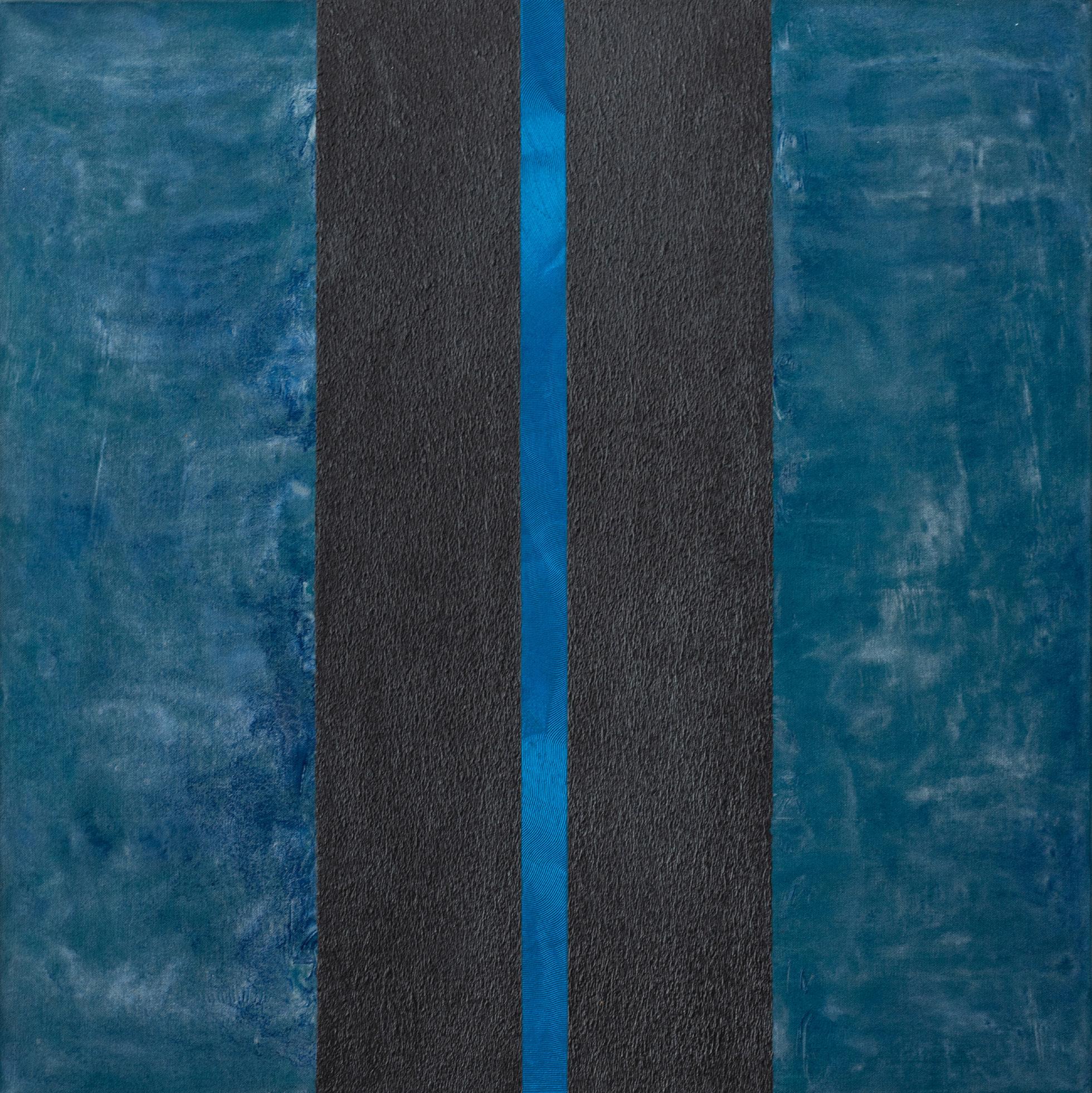
Stripes
2020
mould & injection painting on canvas, diptych, each piece 60x45x4 cm
(total dimensions 60x90x4 cm)

In dubbio 2021
acrylic - mould & injection painting on canvas, diptych, each piece 40x30x4 cm
(total dimensions 40x60x4 cm)
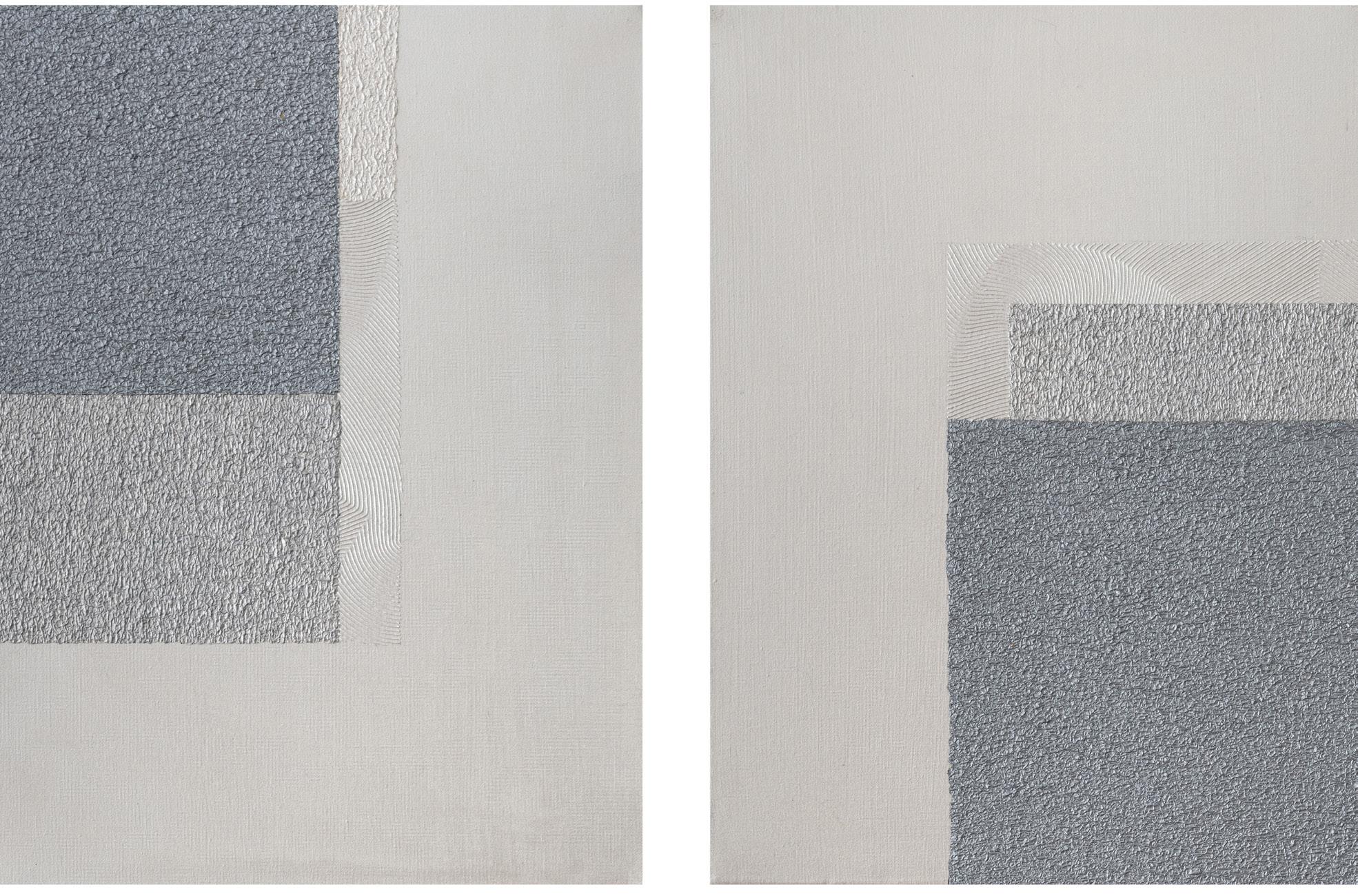
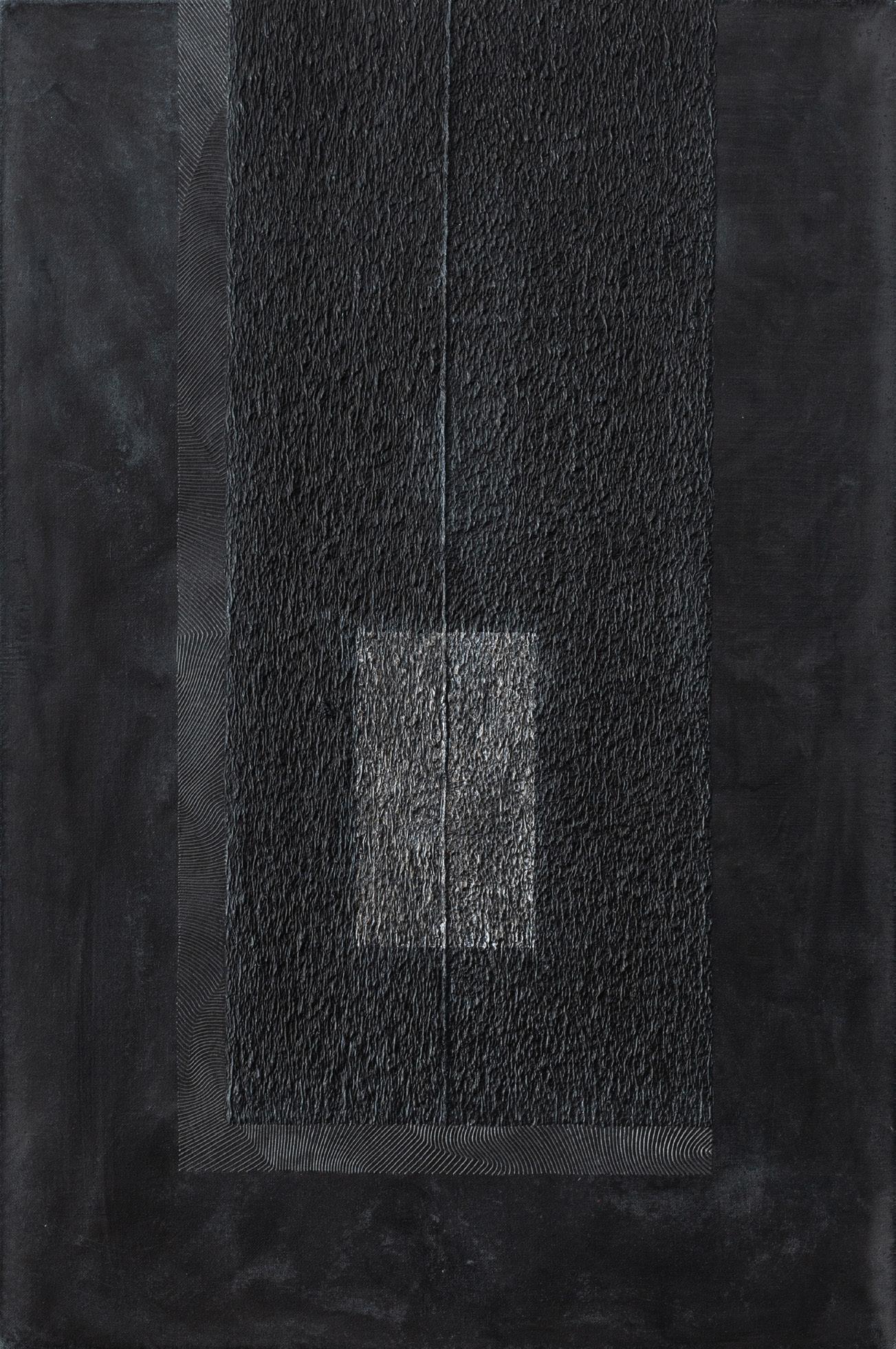
“The painting cannot live in isolation. It needs that eye of a sensitive observer in order to awaken and develop. Without that eye casted on, the painting dies”.1
Artists experience a deep wound: they know that the work only exists when it is exposed to the hawk eye of the other, when it creates a connection with the viewer, enters into a dialogue with his/her perception, knowledge and experience, but they also know that this detachment between the work and its creator exposes it to the danger of its transformation, if not of misunderstanding or misinterpretation on the part of the viewer.
A risk that Mark Rothko, to whom the opening phrase belongs, had declared since 1947 with the conscious despair that the rupture between the work and the artist becomes a loss and an irrecoverable scar of a necessary lack.
Time is the key element. During the time necessary to conceive and execute the work, the artist establishes an indissoluble relationship with the work itself, makes it his/her own and indivisible towards himself/herself and the space in which it takes shape. The time that follows is that of detachment, when the work must detach itself from the univocal eye of the artist and begins to be subjected to other eyes: of the critic, of the collector, of the art history and art market; in this process, the artist begins to move away from the work, begins to feel the painful detachment, entrusting it to the other. Then, the real departure follows, when the work leaves the artist’s atelier and enters a new environment, the exhibition, the public, the private, the itinerant one of a journey through different places and times, languages and cultures.
A wonderful and painful story, a changing and constantly evolving relationship then composes the triangle that takes shape between the artist, the work, the viewer.
It is the story of any art history.
A story that lends itself very well to describing the meaning of the artistic and conceptual process of Marcello De Angelis, to whom IAGA Contemporary Art is dedicating a new personal exhibition in the gallery, proposing a selection of recent and even very recent works, made with the new technique on which De Angelis has been working for several years: the “Mould Painting”. This consists in making paintings obtained by using expanded polyethylene boards, which become real “moulds” with the help of which the acrylic is stretched and layered on the surface of the canvas, obtaining moulds full of material memory, monochrome backgrounds that vibrate according to the light source projected on the work itself. A slow and very delicate process that opens up even to the chance, understood as a possibility given by the lack of total control that De Angelis can exercise during the imprinting: thus, the artist experiences, slowly, day by day, what happens in this processing of the colour that is arranged on the surface “imprinted” by already existing surfaces, chosen on the
1Mark Rothko, text taken from the “Eye of the Tiger” magazine, No. 2, 1947, p. 44.
basis of the texture that characterizes them and which will thus be transposed into the pictorial field.
If the fatality of discovering the possible polyethylene moulding board can be unexpected - when I visited the artist’s studio, for example, De Angelis showed me the PVC sheathing film, characterized by rhythmic undulations that, he told me, drawn his attention immediately and led him to experiment with this plastic element as a tool for his pictorial mouldings - the process of execution is then slow, even very slow: the artist allows each chromatic level to layer and solidify on the support, verifying how the incidence of light causes the colour to fade differently on the canvas. He draws elaborate designs in advance to anticipate how the compositional parts will be arranged, from the arrangement of colours to the tracing of marks that frame and cross the painting, he numbers the various elements that make up his diptychs and polyptychs, given that the rhythmic score is another fundamental aspect of De Angelis’ work.
Time then marks the pictorial material through its rhythmic traces and imprints, left on the surface of the work, and organizes itself in the paintings conceived as a harmonious composition of the emblematic tables: playing on the theme of the square, the rhombus and the rectangle that brings De Angelis’s work together, from a historical point of view, that of the great avant-gardes of the 20th century, from De Stijl to Suprematism, from the issue of colour in French Pointillisme and in Italian Divisionism to the optical and segnic tables of the Sixties, from concretism to the dissemination of the work in space, to the great abstraction from overseas, to the mystical adventure of Barnett Newman, to the absolute rigour of Ad Reinhardt, to the chromatic balance of Frank Stella.
We find an echo of all this in his large-scale works, entitled “Squares” (2022), and designed in rhomboid shape, like tables in which different colours, many of them new to De Angelis’s language (reds, oranges, greens), are arranged to transform the perception of geometries, making them islands in an ocean of pictorial experimentation. The eye must therefore perform slow approaches, after the shock of the perceptive beauty, in order to understand all variations and rhythmic, compositional and chromatic pulsations that De Angelis’ careful painting is able to suggest.
Something similar happens in the two works entitled “Stripes” (2022) which, as De Angelis explicitly stated, evoke the central “zippers” in Newman’s paintings, visual fields in which the viewer is immersed with his/her eye and, at the same time, with the body, the latter becoming the vehicle of a transcendental path of contemplative vision. Also in these last works, conceived as a diptych, De Angelis experimented with the introduction of new chromatic variations, such as orange and green, bright colours that tested his linguistic alphabet and that give surprising results in terms of light vibration.
Similarly in “Innesti” (2022), the artist takes on the challenge of using a new colour, a bright and iridescent pink: the result is an effective fusion between the spiritual meditation component provided by monochrome, which changes and reverberates in the space of vision - a pink monochrome that immediately refers to Yves Klein, the master to whom De Angelis, through his explicit statement, also dedicates “Saut dans la Vide” / “Jump into the void” dated 2021-2022, to which we will return later on - and the more rational component through which the artist “engraves” small dark blue lines in the visual field, crossing the monochrome appearance of the pink.
We were saying, Yves Klein: the great painting mentioned above, “Saut dans la Vide” / “Jump into the void”, shines with all possible shades of silver - a colour very dear to De Angelis, recurring also in the acclaimed earlier cycles made with the technique called Injection Painting - and in the centre there is a blue pictorial monolith: the colour thickens on
the upper horizontal side of the work, and as it flows into the centre of the work, it gradually dilutes, meeting the silver background, to be lost in tiny fragments. We can see in it a watery insertion, a chromatic prayer, an oriental waterfall: is it the visualization of the artist’s thought taking flight through the painting? Or the sinking of matter in the concept underlying each creation?
The title refers to one of Klein’s most mysterious works, depicting the moment in which he throws himself from a window, a suicide that is actually a take-off, given that the black-and-white photograph illustrating the performance only shows the artist in the void, with no one below to cushion his fall.
Art is not safe from itself.
Parallel to these pictorial references, another fascinating source of inspiration for De Angelis is architecture, or rather, the traces left by the foundations - or what remains of them - of architecture in the ground: the three canvases entitled “Fondamenta” (2022) are seductive variations on black that, overlapping and articulating into interwoven rectangles, create a network of concentric geometric images, vibrating outwards from the visual field and thickening into a possible core. Black, another colour dosed wisely by the artist in its mixture with white and even more with grey and silver, is also a central dimension of another work, a great painting in which dark black meets gold, following the compositional formula in “Saut dans la Vide”, which we have just analysed above. Here, the contrast between two colours that quintessentially symbolize the absolute, gold and black, is charming and calls for slow, silent contemplation.
“The imprint excludes any distance from its referent, because in order to function, it needs precisely adhesion; contact also implies the reduction, the abolition of any mediation. That is, the ‘imprinted’ shape is obtained blindly, in the inaccessible interiority of the contact between the matter-substrate and its copy in formation [...]; the shape obtained by imprinting inevitably introduces an anachronistic temporality, not only because ‘the imprint is as old as the world’, as is easily argued, but also because it excludes itself from any history of style”2.
We have seen how every work of De Angelis, in a certain sense, is the result of a “marking” of a passage: the artist, through the technique called “Mould Painting”, actually puts into practice a moulding process, inserting layers of pictorial matter on the support, whose surface is given according to the type of material found and used. This is noted in the cycle “Innesti” (2022), already analysed previously, where the term used by De Angelis to name the works also refers to the cutting of the surface in order to introduce something else into it, something foreign: a pictorial surgery, an anatomical panel of thought and vision which, for those who know the artist’s biographical events as well, cannot be dissociated from his long and recent hospitalization. A period that undoubtedly marks aesthetic thinking and which De Angelis translated into this work on the skin, understood as a field on which the sign engraves time and vice versa: time engraves
signs that are not signals of death or despair, but traces of continuous remodelling and generation.
Art is life’s bet against the end.
They are all skins that Marcello De Angelis stages: chromatic epidermises caressed by light, bearing the exact scars of a history of art and man. The same happens in the diptych “Morphé” (2022), where on a bronze background, in a lateral position, a clear, vivid blue rectangle is inserted, furrowed by a rhythmic and repeated undulation. This is the result of a simple PVC sheathing film, which is precisely the material stamp of the painting on the work.
We breathe all that lyricism of time which, from Dorazio to Castellani, from Dadamaino’s Alfabeti della Mente/Alphabets of the Mind to Opalka’s calligraphic numberings, told our modernity the dialogue that each artist has with the passing of minutes, hours, days. Traces left on his skin and which De Angelis wants to place and emphasize on the vibrant chromatic surfaces of his new paintings.
From this perspective, the pictorial panels that make up three polyptychs that the artist has been working on for some time, each of them entitled “Polittico delle maschere” / “Polyptych of Masks” (2022), must also be analysed. The graphic design, carefully studied, provides that on corresponding white, silver or black pictorial fields, whose surface evokes the seductive graininess of the epidermis, a central line crosses the monochrome and inserts, enlarged, the detail of each of the fingers of the artist’s hand, from the thumb to the little finger, from right to left. The result consists of works resembling very elegant bandages and gauzes, which protect the most intimate signs of our identity, unique and inimitable: the painting becomes the mouthpiece of human genetics. Seen as a whole, each “Polyptych” is thus the open album, flicked-through on the wall, of a “Self” that evokes another “Self”: the viewer, inviting him to take part in the declaration of diversity and uniqueness of each.
Sixty years earlier, Piero Manzoni had cynically decided that to declare an object, a living being or an egg as being a work of art, the signature or, even better, the fingerprint of the artist himself would have been sufficient to leave the mark of his passing, the certification of mastery over the mundane everyday routine. The eggs, thus marked, he offered to be eaten by the viewers during a show. Elsewhere, he transformed seductive models into sculptures, signing their hips; the position they adopted, reminiscent of ancient models, and the artist’s signature were enough to declare their identity and belonging to a story.
This had been shown by Marcel Duchamp with his Fountain at the beginning of the 20th century.
Yves Klein, instead, had asked these models to become living brushes: their imprint of bodies completely covered in blue or what were supposed to be traces of silhouettes marked with the oxyhydric flame, in a truly extreme body painting operation, produced works of a great transcendentalism, which completely lose their physical indications, becoming suspended shrouds, washed away in the wind of thought.
When he showed me in his workshop these works destined to become the three “Polittici delle Maschere” / “Polyptychs of the Masks”, he told me about the skin that unfolds and wraps around the sculptures in which man is measured and mixed with the great nature, strong and absolute, of Giuseppe Penone and about the folds in the starry sky of the restless Van Gogh, when he wandered at night in search of a dimension of humanity to translate into his paintings so tormented, yet perfectly composed.
And then we should talk about Alberto Burri, about his sacks, about his sutures, about his fire-breathing, about his burnt
fragments.
Burri, who in the dark knows how to find the light. And who fades away the light, in black.
A history within history, again an issue of time engraved on the skin of art, in the scars and changes with which the days inevitably mark this skin of art.
De Angelis is a contemporary exponent of this history, as the new exhibition project at IAGA well suggests.
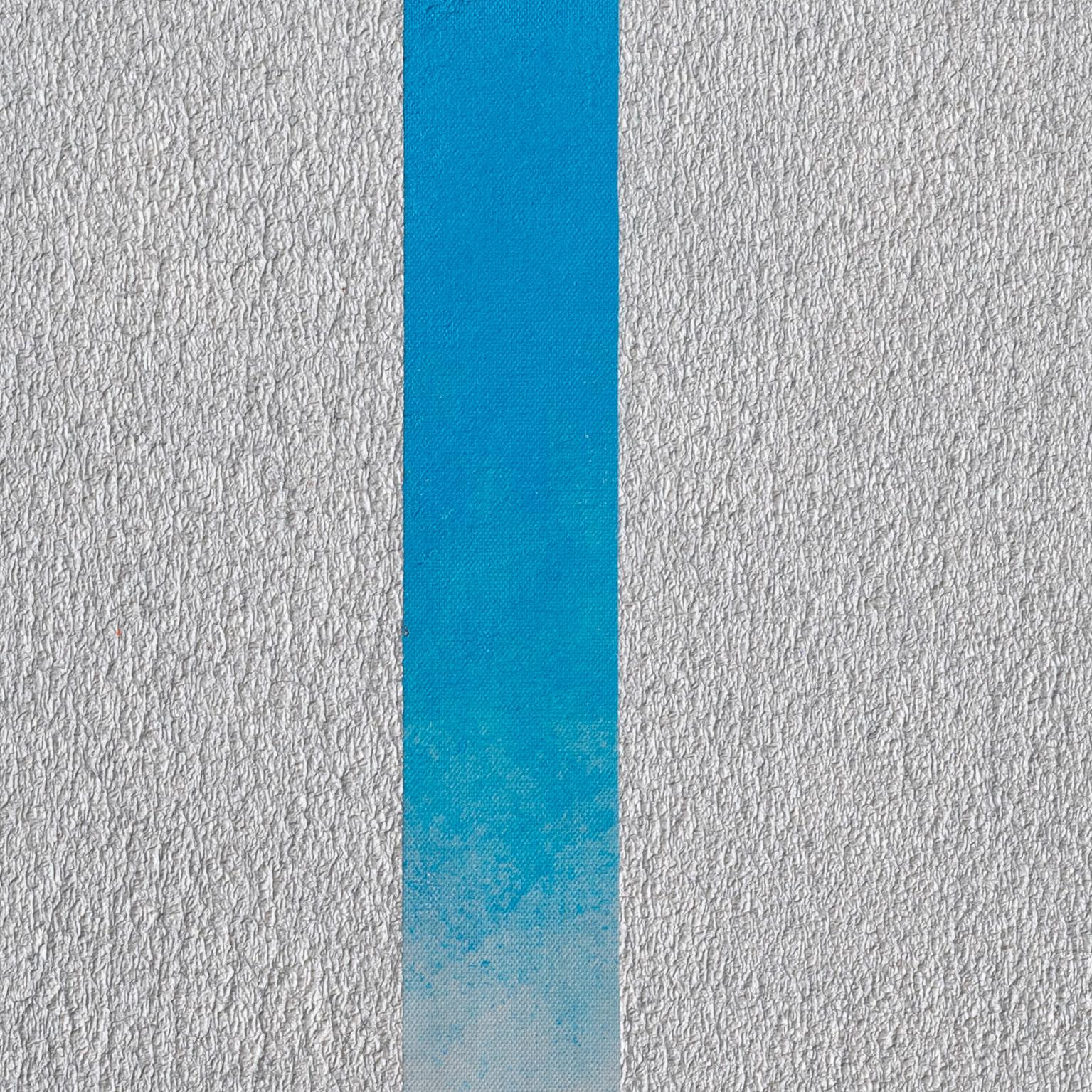

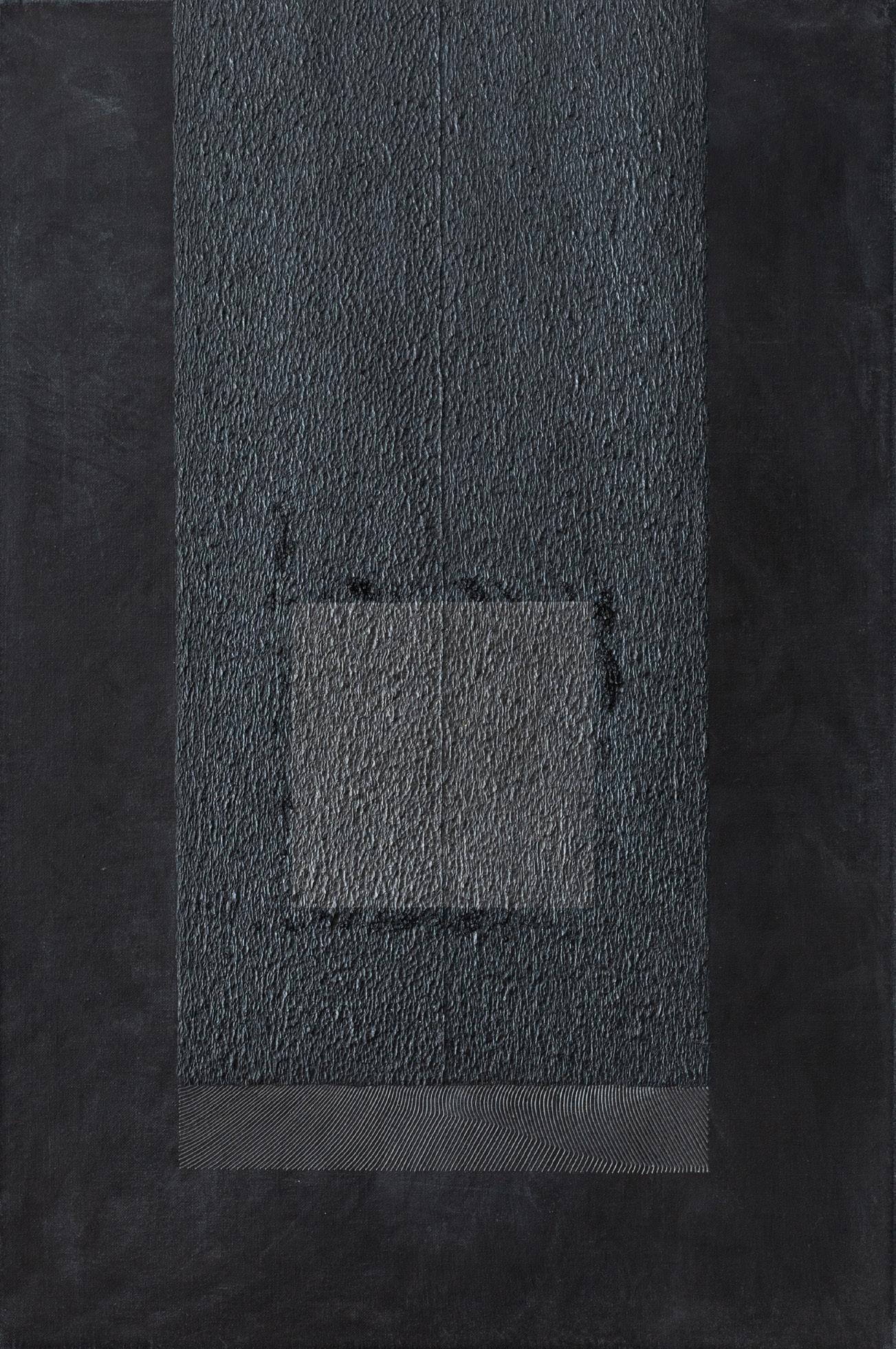
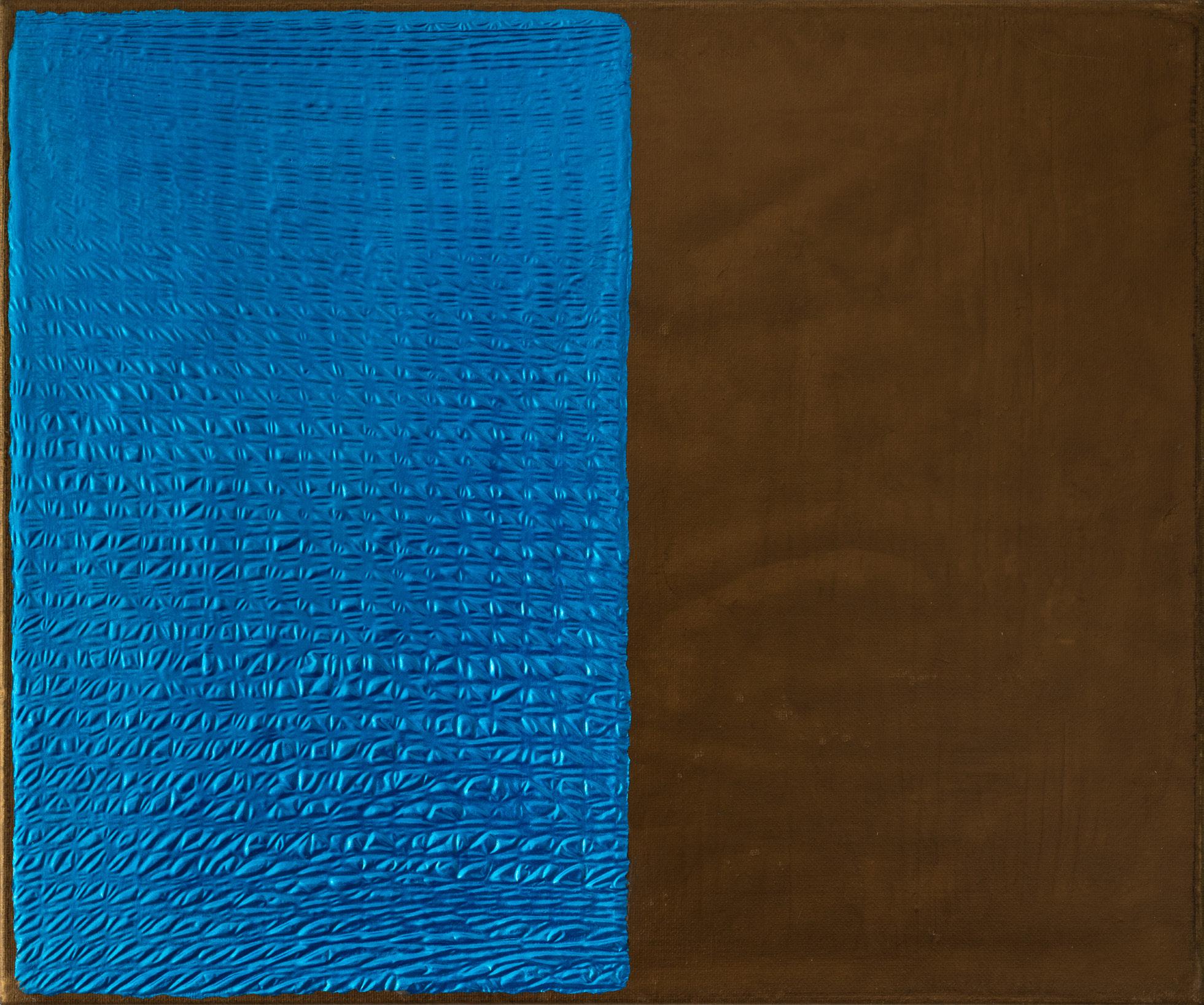
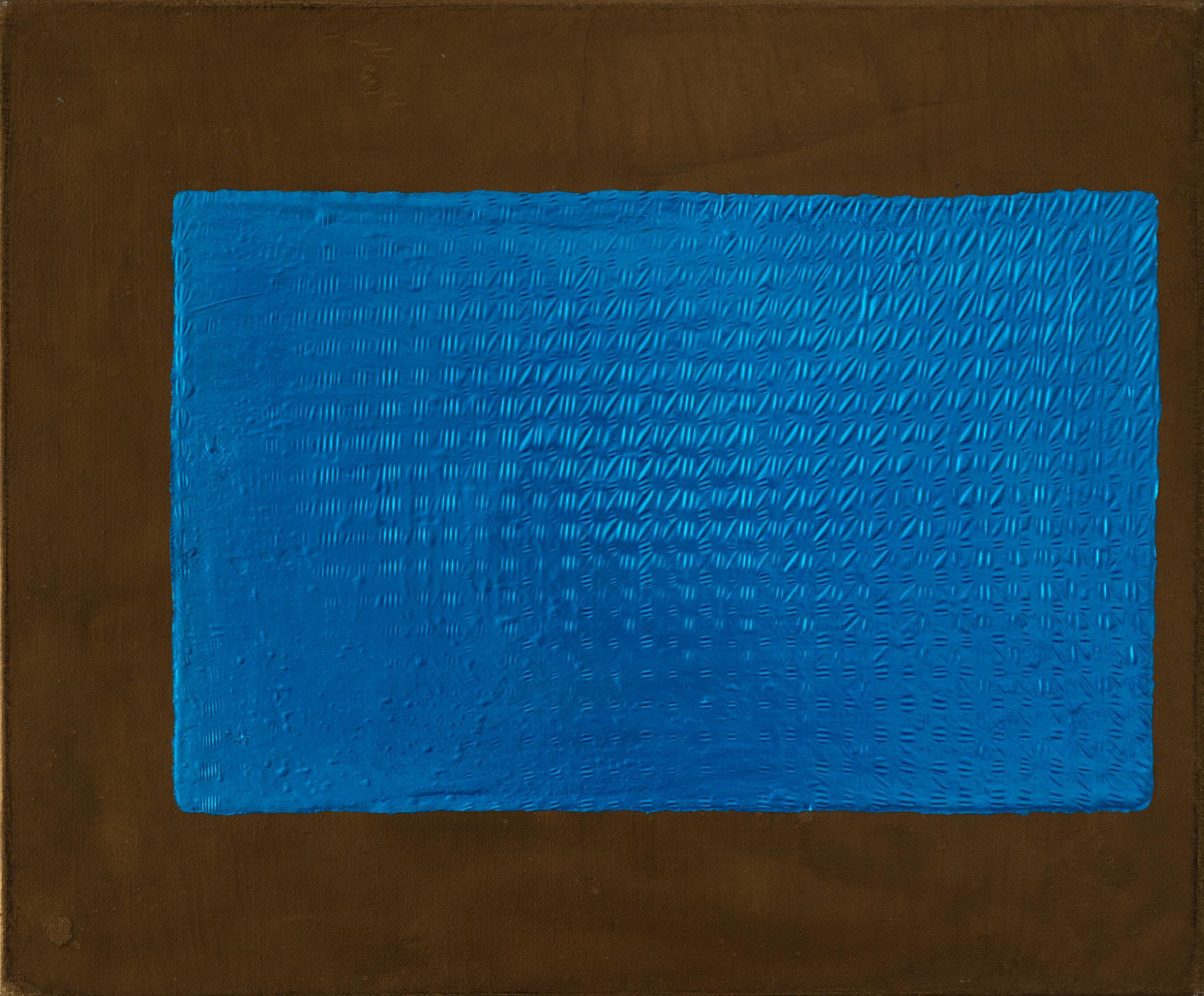
Privire și Timp
„Pictura nu poate trăi în izolare. Are nevoie de acea privire a unui observator sensibil pentru a se putea trezi și dezvolta. Fără acea privire pictura moare”1
Artiștii experimentează o rană profundă: ei știu că opera există doar în momentul în care este expusă privirii celuilalt, când creează o conexiune cu privitorul, intră în dialog cu percepția, cunoștințele şi experiența lui, dar știu și că această detașare dintre operă și creatorul ei o expune la pericolul transformării ei, dacă nu chiar al neînțelegerii sau al interpretării greșite din partea privitorului.
Un risc pe care Mark Rothko, căruia îi aparține fraza de început, îl declarase încă din 1947 cu disperarea conștientă că ruptura dintre operă și artist devine o pierdere și o cicatrice iremediabilă a unei lipse necesare.
Timpul este elementul fundamental. În timpul necesar conceperii și realizării operei, artistul stabilește cu opera însăşi o relație indisolubilă, o face și o simte proprie și indivizibilă față de sine și față de spațiul în care aceasta se conturează. Timpul următor este cel al detașării, când opera trebuie să se desprindă de privirea univocă a artistului și începe să fie supusă altor priviri: ale criticului, ale colecționarului, ale istoriei și ale pieței de artă; în acest proces, artistul începe să se îndepărteze de operă, începe să resimtă detaşarea dureroasă, încredinţând-o celuilalt. Apoi, urmează adevărata plecare, când opera părăseşte atelierul și pătrunde într-un mediu nou, cel expozițional, cel public, cel privat, cel itinerant al unei călătorii prin diferite locuri și timpuri, limbi şi culturi.
O poveste minunată și dureroasă, o relație în schimbare și în continuă evoluție compun apoi triunghiul care se conturează între artist, operă, spectator.
Este povestea oricărei istorii a artei.
O poveste care se pretează foarte bine descrierii sensului procesului artistic și conceptual al lui Marcello De Angelis, căruia IAGA Contemporary Art îi dedică o nouă expoziție personală în spațiile galeriei, propunând o selecție de lucrări recente și chiar foarte recente, realizate cu noua tehnică la care De Angelis lucrează de câțiva ani: “Mould Painting” („Pictură cu mulaj”). Aceasta constă în realizarea de tablouri obținute prin folosirea plăcilor de polietilenă expandată, care devin adevărate „matriţe” cu ajutorul cărora acrilicul este întins și stratificat pe suprafața pânzei, obținându-se mulaje pline de memorie materială, fundaluri monocrome care vibrează în funcţie de sursa luminoasă proiectată asupra lucrării respective.
1Mark Rothko, text preluat din revista “The Tiger’s Eye”, nr. 2, 1947, p. 44.
Un proces lent și foarte delicat care se deschide inclusiv la întâmplare, înțeles ca o posibilitate dată de lipsa de control total pe care De Angelis îl poate exercita în timpul amprentării: astfel, artistul experimentează, încet, zi de zi, ce se întâmplă în această prelucrare a culorii care este dispusă pe suprafaţa „imprimată” de suprafeţe la rândul lor deja existente, alese pe baza texturii care le caracterizează şi care va fi astfel transpusă în câmpul pictural.
Dacă fatalitatea descoperirii unei posibile plăci-mulaj de polietilenă poate fi neaşteptată - când am vizitat atelierul, spre exemplu, De Angelis mi-a arătat folia de înveliș din PVC, caracterizată prin ondulații ritmice care, mi-a spus el, i-au atras imediat atenția și l-au determinat să experimenteze și acest element plastic ca instrument pentru mulajele sale picturale - procesul de realizare este apoi lent, chiar foarte lent: artistul permite fiecărui nivel cromatic să se stratifice și să se solidifice pe suport, verificând modul în care incidența luminii determină estomparea diferită a culorii pe pânză. Desenează, dinainte, proiecte elaborate pentru a anticipa modul în care vor fi dispuse părțile compoziționale, de la aranjarea culorilor până la trasarea semnelor care încadrează și traversează pictura, numerotează diferitele elemente care alcătuiesc dipticele și polipticurile sale, dat fiind faptul că partitura ritmică este un alt aspect fundamental al lucrării lui De Angelis.
Timpul marchează apoi materialul pictural prin urmele şi amprentele sale ritmice, lăsate pe suprafața lucrării, și se organizează în picturile concepute ca o compoziție armonioasă a tabelelor emblematice: jucându-se pe tema pătratului, a rombului și a dreptunghiului care apropie opera lui De Angelis, din punct de vedere istoric, de cea a marilor avangarde ale secolului al XX-lea, de la De Stijl la Suprematism, de la problema culorii în Puntillism și în Divizionism la tabelele optice și de semne ale anilor șaizeci, de la concretism la diseminarea operei în spațiu, până la marea abstracție de peste ocean, la aventura mistică a lui Barnett Newman, la rigoarea absolută a lui Ad Reinhardt, la echilibrul cromatic al lui Frank Stella.
Găsim un ecou din toate acestea în lucrările sale de mari dimensiuni, intitulate „Squares” (2022), și concepute în formă romboidă, ca niște tabele în care culori diferite, multe dintre acestea noi pentru limbajul lui De Angelis (roșii, portocalii, verzi), se aranjează ca să transforme percepția geometriilor, făcându-le insule ale unui ocean de experimentare picturală. Ochiul trebuie să efectueze așadar parcursuri lente de apropiere, după electrocutarea frumuseții perceptive, pentru a înțelege toate variațiile și pulsațiile ritmice, compoziționale și cromatice pe care pictura atentă a lui De Angelis este capabilă să le sugereze. Ceva asemănător se întâmplă şi în cele două lucrări intitulate „Stripes” (2022) care, aşa cum a afirmat în mod explicit De Angelis, evocă „fermoarele” centrale din picturile lui Newman, câmpuri vizuale în care privitorul este cufundat cu privirea şi, totodată, cu corpul, acesta din urmă devenind vehiculul unui traseu transcendental de viziune contemplativă. Şi în aceste lucrări din urmă, concepute ca un diptic, De Angelis a experimentat introducerea unor noi variații cromatice, precum portocaliul și verdele, culori aprinse care i-au testat alfabetul lingvistic și care dau rezultate surprinzătoare în ceea ce privește vibrația luminoasă. În mod similar în „Innesti” (2022), artistul își asumă provocarea de a folosi o culoare nouă, un roz strălucitor și iridescent: rezultatul este o fuziune eficientă între componenta de meditație spirituală oferită de monocrom, care se schimbă și
reverberează în spațiul viziunii - un monocrom roz care face trimitere imediat la Yves Klein, maestru căruia De Angelis, prin declarația sa explicită, îi dedică și „Saut dans la Vide” din 2021-2022, la care vom reveni - și componenta mai rațională prin care artistul „gravează” linii mici de culoare albastru închis în câmpul vizual, traversând aspectul monocrom al rozului.
Spuneam, Yves Klein: marele tablou menționat mai sus, „Saut dans la Vide”, strălucește cu toate nuanțele de argintiu posibile - o culoare foarte dragă lui De Angelis, recurentă și în aclamatele cicluri anterioare realizate cu tehnica numită
Injection Painting - iar în centru se află un monolit pictural albastru: culoarea se îngroașă pe latura orizontală superioară a lucrării și pe măsură ce se scurge în centrul lucrării, se diluează treptat, întâlnind fundalul argintiu, pentru a se pierde în fragmente minuscule. Putem vedea în ea o inserție apoasă, o rugăciune cromatică, o cascadă orientală: este vizualizarea gândirii artistului care își ia zborul prin pictură? Sau scufundarea materiei în conceptul care stă la baza fiecărei creații?
Titlul face referire la una dintre cele mai misterioase lucrări ale lui Klein, redând momentul în care el se aruncă de la o fereastră, o sinucidere care este, de fapt, o decolare, având în vedere că fotografia alb-negru care ilustrează prestația, îl arată doar pe artist în gol, nefiind nimeni dedesubt pentru a-i amortiza căderea.
Arta nu se salvează de ea însăși.
Paralel cu aceste referințe picturale, o altă sursă fascinantă de inspirație pentru De Angelis este arhitectura sau, mai bine zis, urmele lăsate de fundaţii - sau de ceea ce rămâne din ele - de arhitectură în pământ: cele trei pânze intitulate „Fondamenta” (2022) sunt variații seducătoare pe negru, care suprapunându-se și articulându-se în dreptunghiuri împletite, creează o rețea de imagini geometrice concentrice, vibrând spre exteriorul câmpului vizual și îngroșându-se într-un posibil nucleu. Negrul, o altă culoare dozată cu înțelepciune de artist în amestecul său cu albul și chiar mai mult cu gri și argintiu, este, de asemenea, o dimensiune centrală a unei alte lucrări, un mare tablou în care negrul întunecat se întâlnește cu auriul, urmând formula compozițională din „Saut dans la Vide” pe care tocmai am analizat-o mai sus. Aici, contrastul dintre două culori care prin excelență simbolizează absolutul, auriul și negrul, este fermecător și solicită o contemplare lentă, tăcută.
- Amprente și urme
„Amprenta exclude orice distanță față de referentul său, deoarece pentru a funcționa, are nevoie tocmai de aderență; contactul presupune şi reducerea, desfiinţarea oricărei medieri. Adică, forma „amprentată” se obține pe bâjbâite, în interioritatea inaccesibilă a contactului dintre materia-substrat și copia sa în formare [...]; forma obținută prin amprentă introduce inevitabil o temporalitate anacronică, nu doar pentru că ‘amprenta este la fel de veche precum lumea’, așa cum este ușor de argumentat, dar și pentru că aceasta se exclude din orice istorie a stilului”2 Am văzut cum fiecare lucrare a lui De Angelis, într-un anumit sens, este rezultatul unei „marcări” a unei treceri: artistul, prin tehnica numită „Mould Painting”, pune în practică de fapt un proces de modelare, inserând pe suport stratificări de 2Georges Didi-Hubermann, La somiglianza per contatto. Archeologia, anacronismo e modernità dell’impronta, Bollati Boringhieri, Torino 2009, p 115.
materie picturală, a căror suprafaţă este dată în funcţie de tipul de material găsit şi folosit. Acest lucru este evident în ciclul „Innesti” (2022), analizat deja anterior, unde termenul folosit de De Angelis pentru a denumi lucrările se referă, de asemenea, la tăierea suprafeței pentru a introduce altceva în aceasta, ceva străin: o operație de chirurgie picturală, un panou anatomic al gândirii și al viziunii care, pentru cei care cunosc inclusiv evenimentele biografice ale artistului, nu poate fi disociat de îndelungata și recenta sa spitalizare. O perioadă care marchează fără îndoială gândirea estetică și pe care De Angelis a tradus-o în lucrul acesta pe piele, înțeleasă ca un câmp pe care semnul gravează timpul și viceversa: timpul gravează semne care nu sunt semnale de moarte sau de disperare, ci urme ale unei remodelări și generări continue.
Arta este pariul vieții împotriva finalului.
Toate sunt piei pe care Marcello De Angelis le pune în scenă: epiderme cromatice mângâiate de lumină, care poartă cicatrici exacte ale unei istorii a artei și a omului. La fel se întâmplă și în dipticul „Morphé” (2022), unde pe un fond de bronz, în poziție laterală, este inserat un dreptunghi albastru clar, viu, brăzdat de o ondulație ritmată și repetată. Acesta este rezultatul dat de o simplă folie de înveliș din PVC, care este tocmai ștampila materială a picturii pe lucrare.
Respirăm tot acel lirism al timpului care, de la Dorazio la Castellani, de la Alfabeti della Mente/Alfabetele minții a lui Dadamaino la numerotările caligrafice ale lui Opalka, a povestit modernității noastre dialogul pe care fiecare artist îl poartă cu trecerea minutelor, a orelor, a zilelor. Urme lăsate pe pielea lui și pe care De Angelis vrea să le aşeze și să le pună în evidenţă pe suprafețele cromatice vibrante ale noilor sale picturi.
Din această perspectivă, trebuie analizate și panourile picturale care alcătuiesc trei polipticuri la care artistul lucrează de ceva vreme, fiecare dintre ele intitulat „Polittico delle maschere” / „Polipticul măștilor” (2022). Designul grafic, atent studiat, prevede ca pe câmpuri picturale corespunzătoare albe, argintii sau negre, a căror suprafață evocă granulozitatea seducătoare a epidermei, o linie centrală să traverseze monocromia și să insereze, mărit, detaliul fiecăruia dintre degetele mâinii artistului, de la degetul mare la degetul mic, de la dreapta la stânga. Rezultatul constă în lucrări asemănătoare unor bandaje și pansamente foarte elegante, care protejează cele mai intime semne ale identității noastre, unice și inimitabile: pictura devine purtătorul de cuvânt al geneticii umane. Privit în ansamblu, fiecare „Polittico” / „Poliptic” este astfel albumul deschis, răsfoit pe perete, al unui „eu” care evocă un alt „eu”: spectatorul, invitându-l să ia parte la declarația de diversitate și unicitate a fiecăruia.
Cu șaizeci de ani mai devreme, Piero Manzoni hotărâse cu cinism că pentru a declara că un obiect, o ființă vie sau un ou, este o operă de artă, ar fi fost suficientă semnătura sau, chiar mai bine, amprenta degetului artistului însuși pentru a lăsa semnul trecerii sale, certificarea măiestriei asupra banalului cotidian. Ouăle, astfel marcate, le oferea spre a fi mâncate și de către public în timpul unui spectacol. În altă parte, transforma modele seducătoare în sculpturi, semnându-le șoldurile; era suficientă poziția pe care acestea o adoptau, care amintea de modelele antice, și semnătura artistului pentru a declara identitatea și apartenența acestora la o poveste.
Acest lucru fusese arătat de Marcel Duchamp prin „Fântâna” sa, la începutul secolului al XX-lea.
Yves Klein, în schimb, le ceruse acestor modele să devină pensule vii: amprenta lor de corpuri acoperite complet în albastru sau care trebuiau să fie urme de siluete marcate cu flacăra oxihidrică, într-o operație de pictură corporală cu adevărat extremă, producea opere de un mare transcendentalism, care își pierd cu desăvârșire indiciile fizice, devenind
giulgiuri suspendate, spălate în vântul gândului.
Când mi le-a arătat în atelier, aceste lucrări destinate să devină cele trei “Polittici delle Maschere” / „Polipticuri ale măștilor”, mi-a povestit despre pielea care se desfășoară și se înfășoară în jurul sculpturilor în care omul se măsoară și se amestecă cu marea natură, puternică și absolută, a lui Giuseppe Penone și despre faldurile de pe cerul înstelat al neliniștitului Van Gogh, când rătăcea noaptea în căutarea unei dimensiuni de umanitate pe care să o transpună în
picturile sale atât de chinuite, și totuși perfect alcătuite.
Și apoi ar trebui să vorbim despre Alberto Burri, despre sacii lui, despre suturile lui, despre suflările lui cu foc, despre fragmentele sale arse.
Burri, care în negru știe să găsească lumina. Și care stinge lumina, în negru.
O istorie în istorie, din nou o problemă a timpului gravat pe pielea artei, în cicatricile și în schimbările cu care zilele, neapărat, marchează această piele a artei.
De Angelis este un exponent actual al acestei istorii, așa cum bine ne sugerează noul proiect expozițional de la IAGA.
Ilaria Bignotti
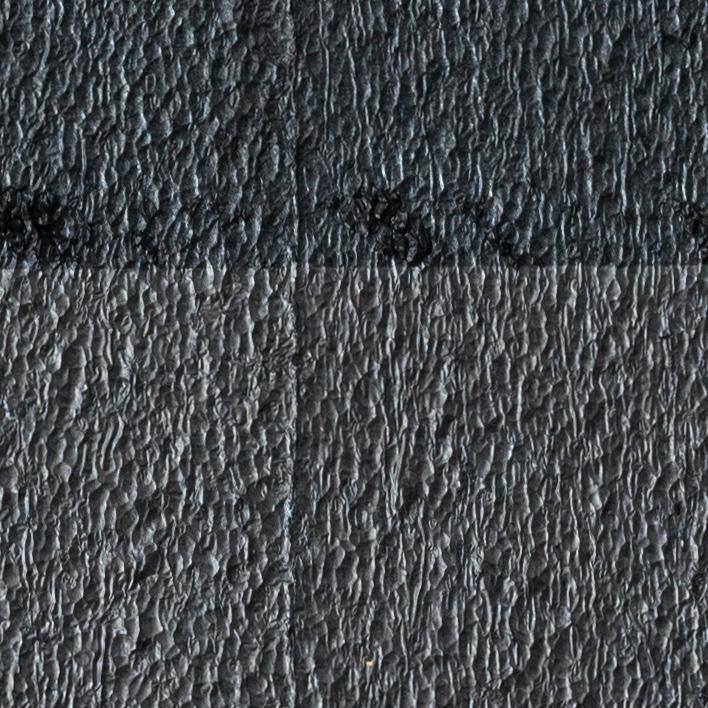
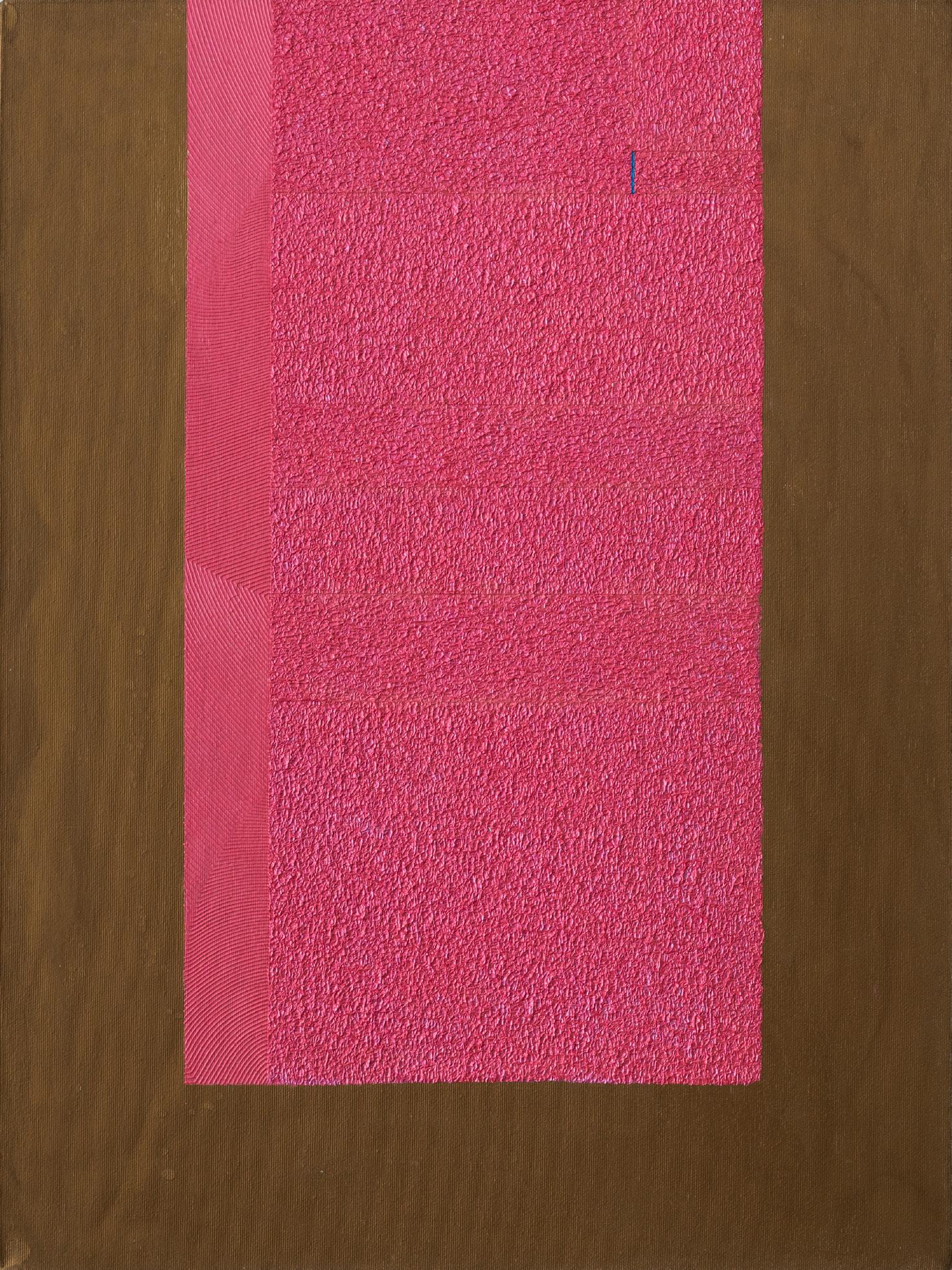
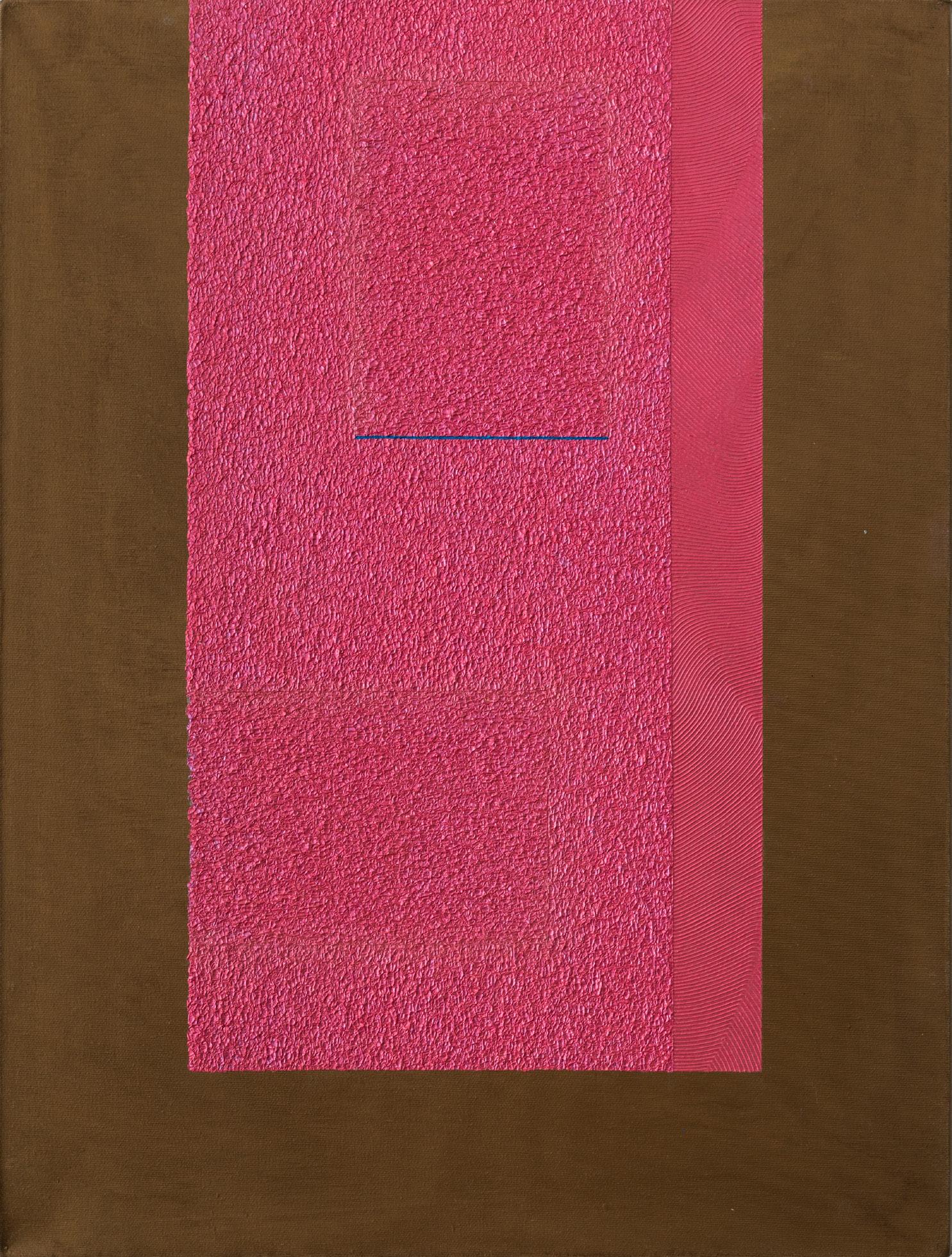
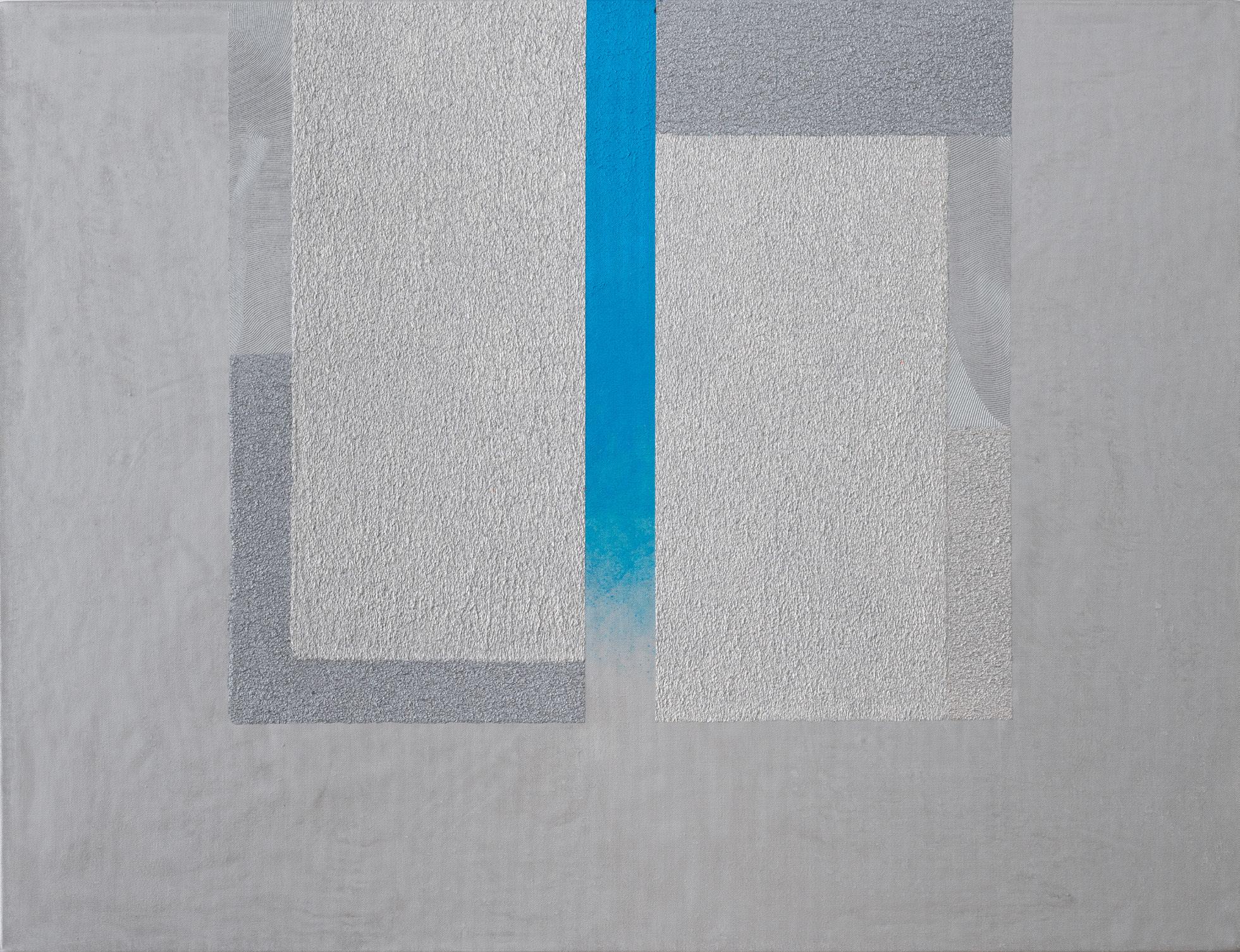
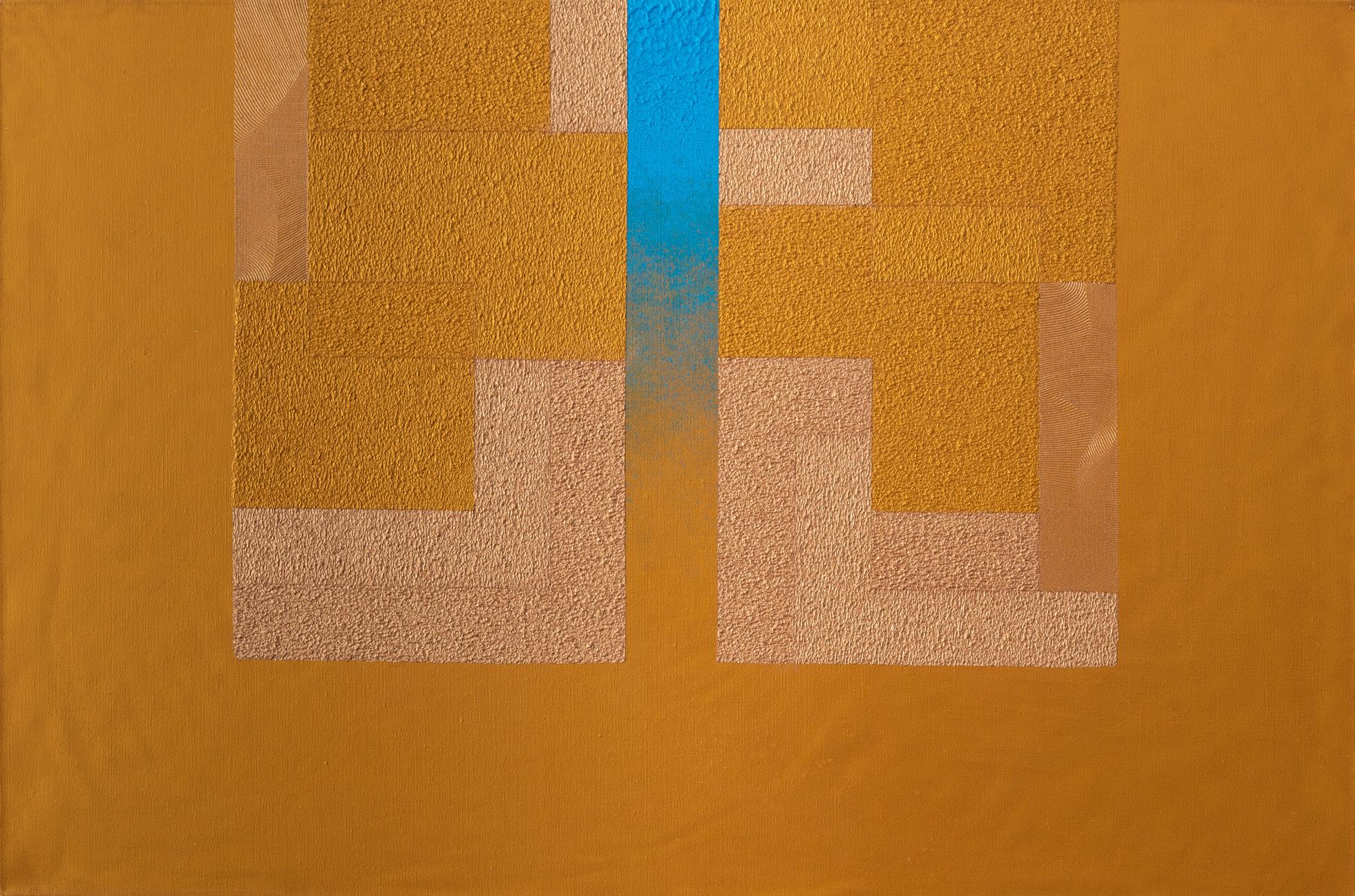
60x90x5 cm
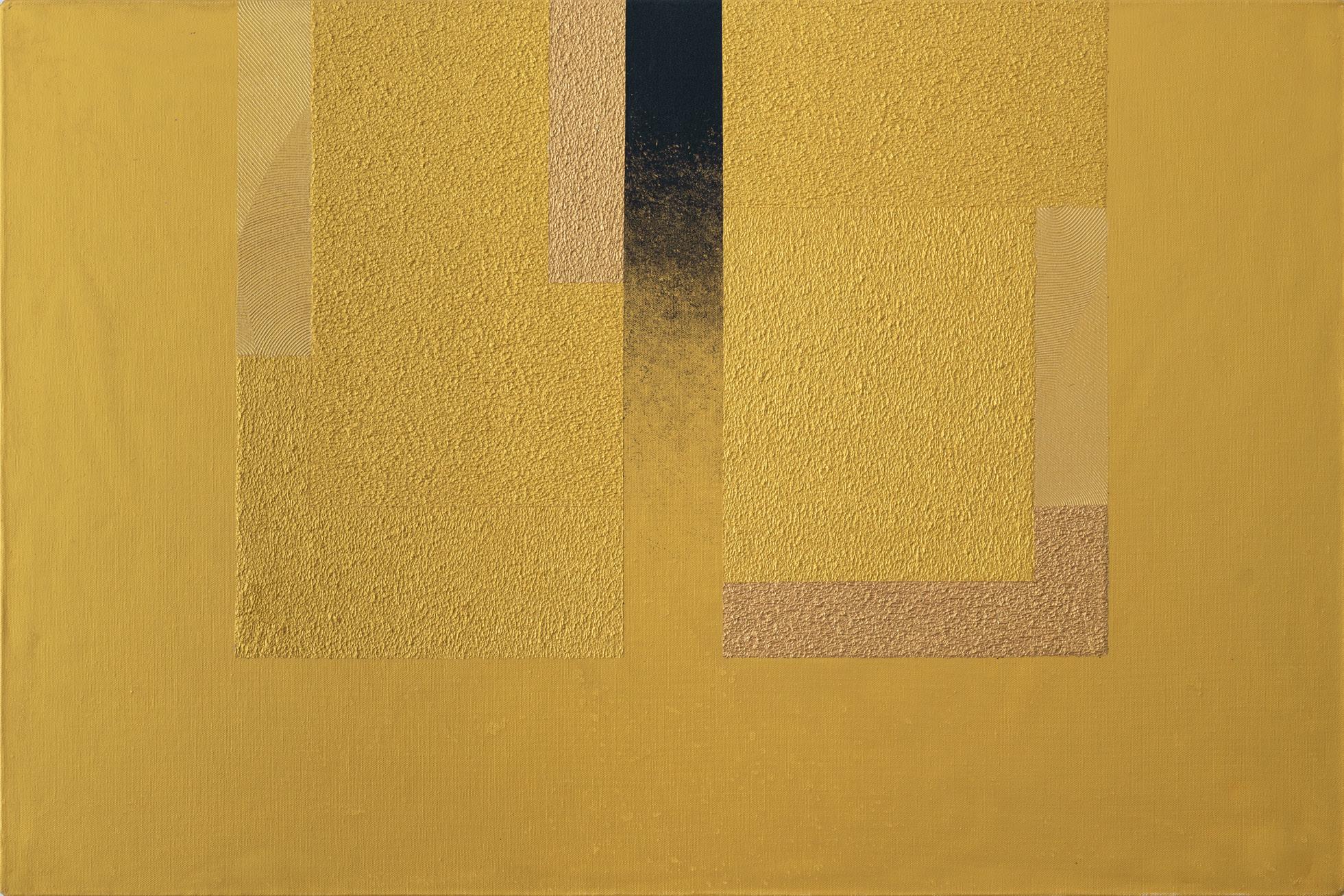
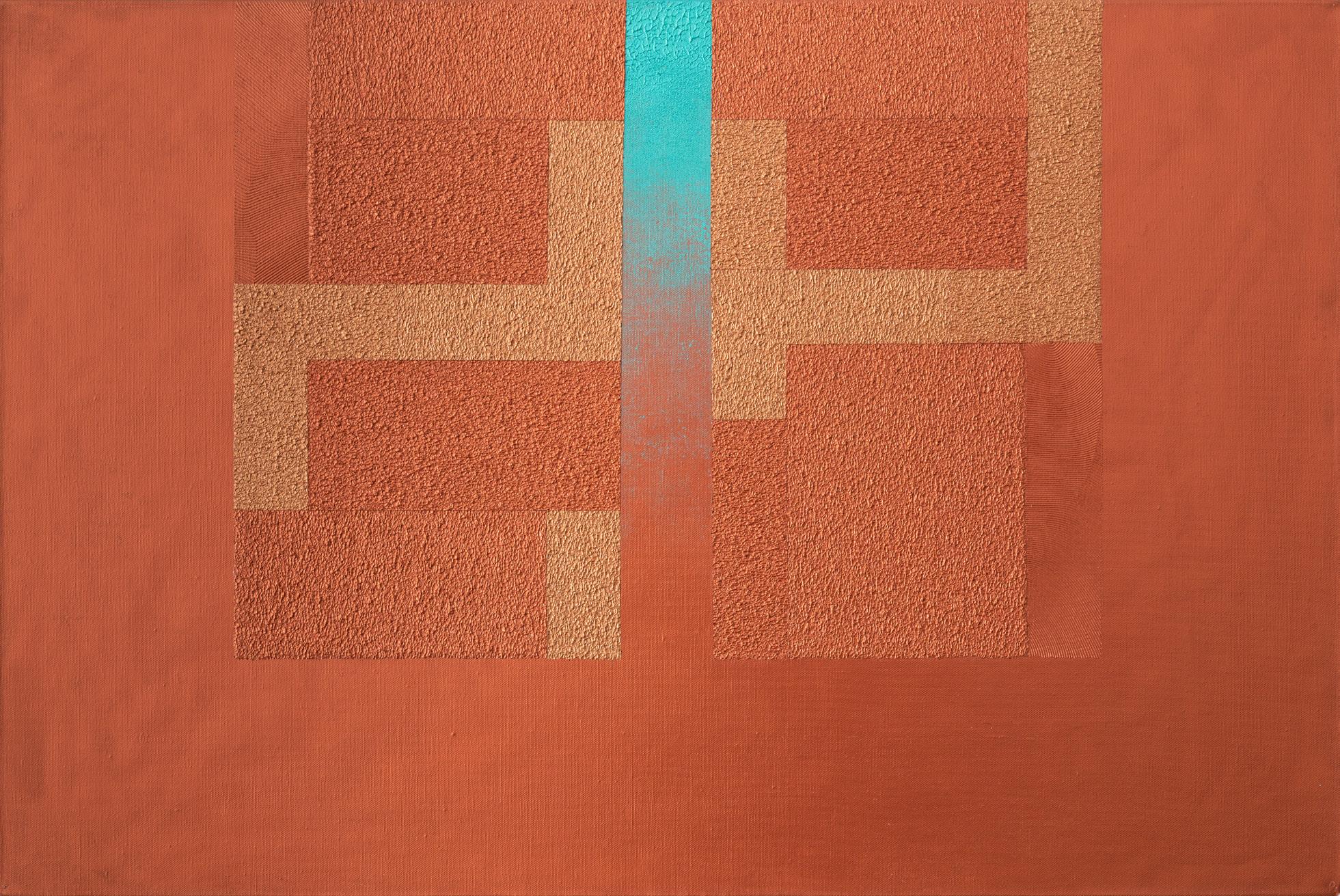
Polyptych of Masks (white) 2022
acrylic - mould & injection painting on canvas polyptych composed of nine pieces, each one 30x40x4 cm (total dimensions 90x120 cm)
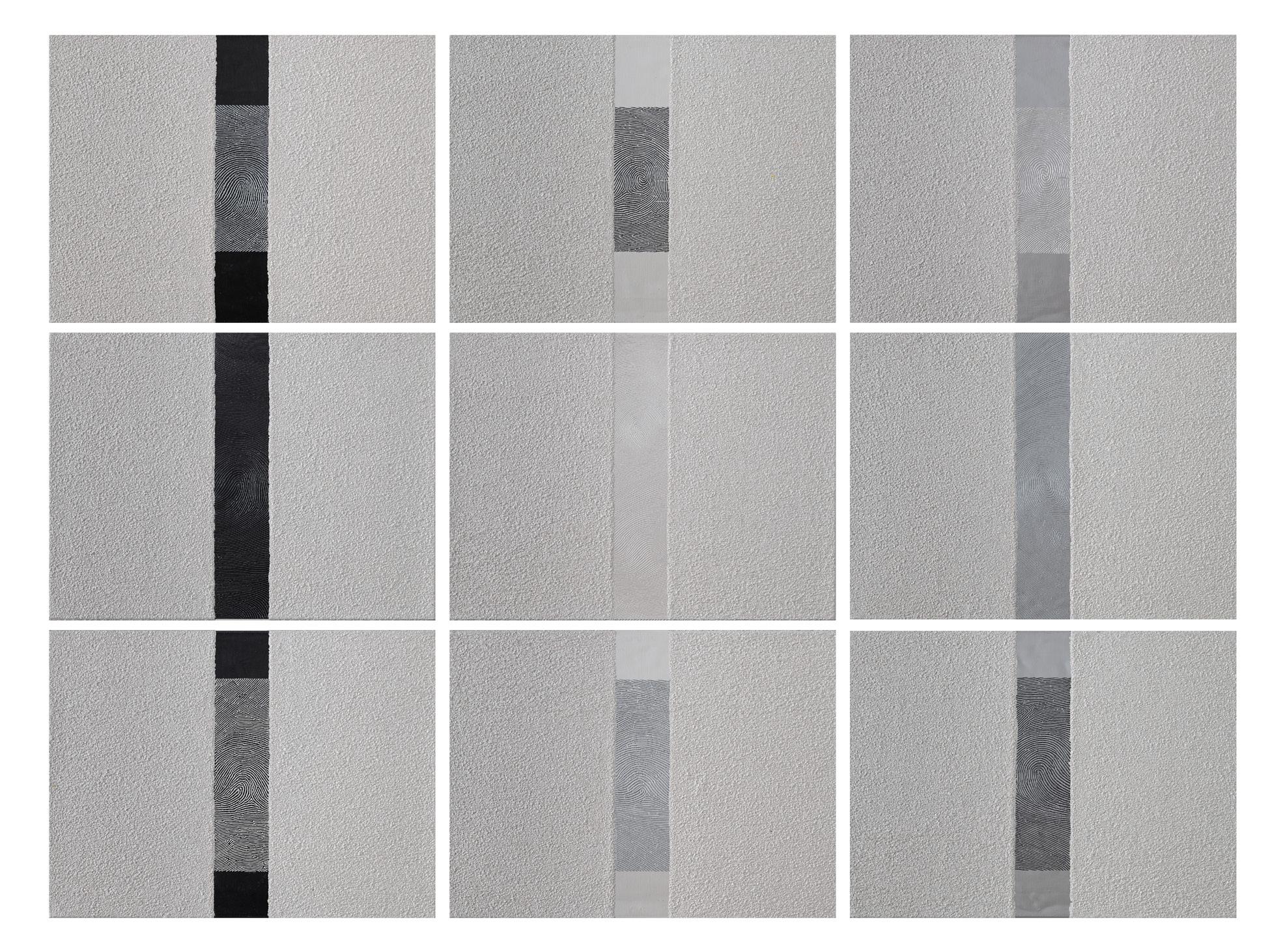
Polyptych of Masks (silver) 2022
acrylic - mould & injection painting on canvas polyptych composed of nine pieces, each one 30x40x4 cm (total dimensions 90x120 cm)
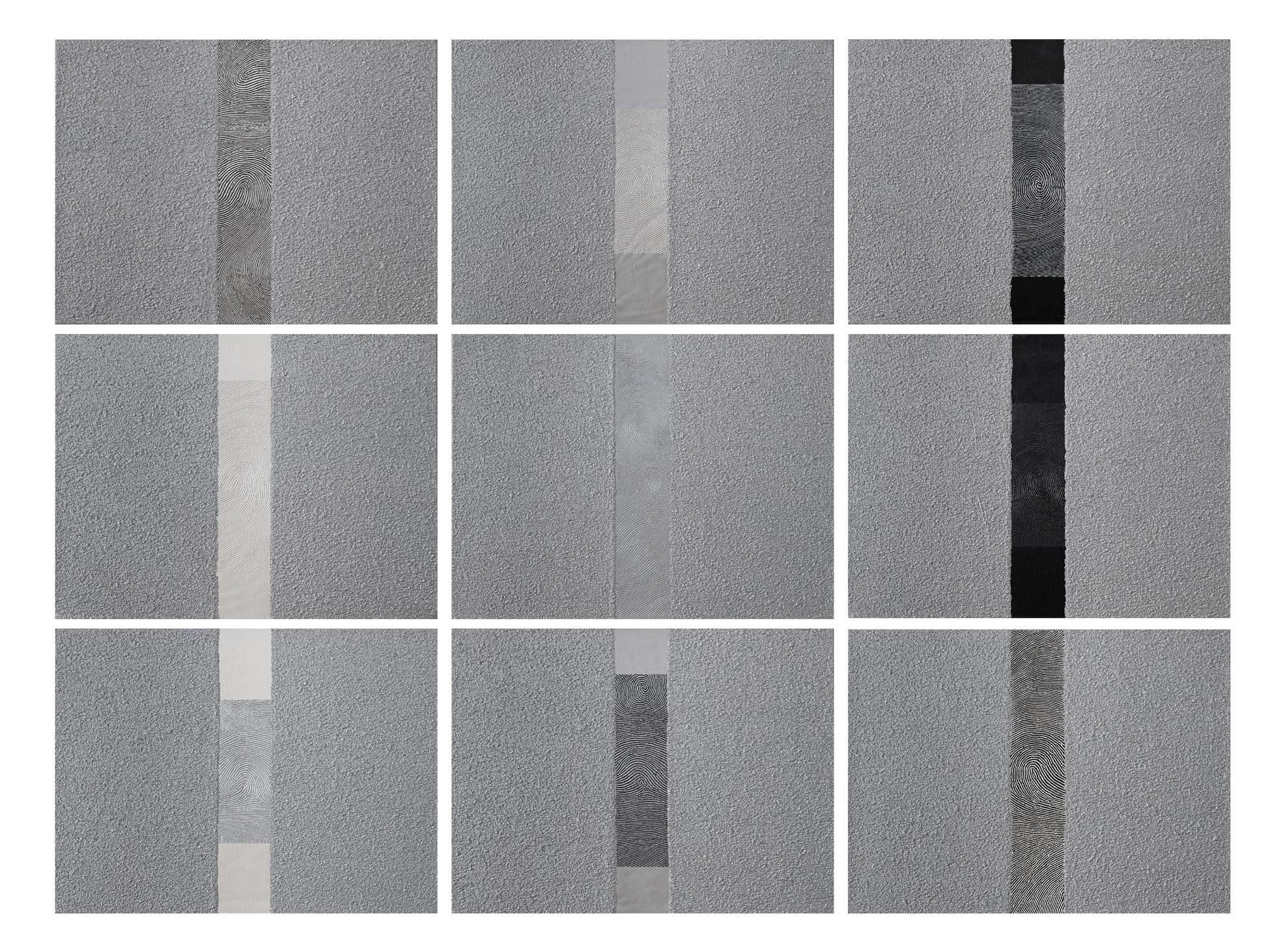
Polyptych of Masks (black) 2022
acrylic - mould & injection painting on canvas polyptych composed of nine pieces, each one 30x40x4 cm (total dimensions 90x120 cm)



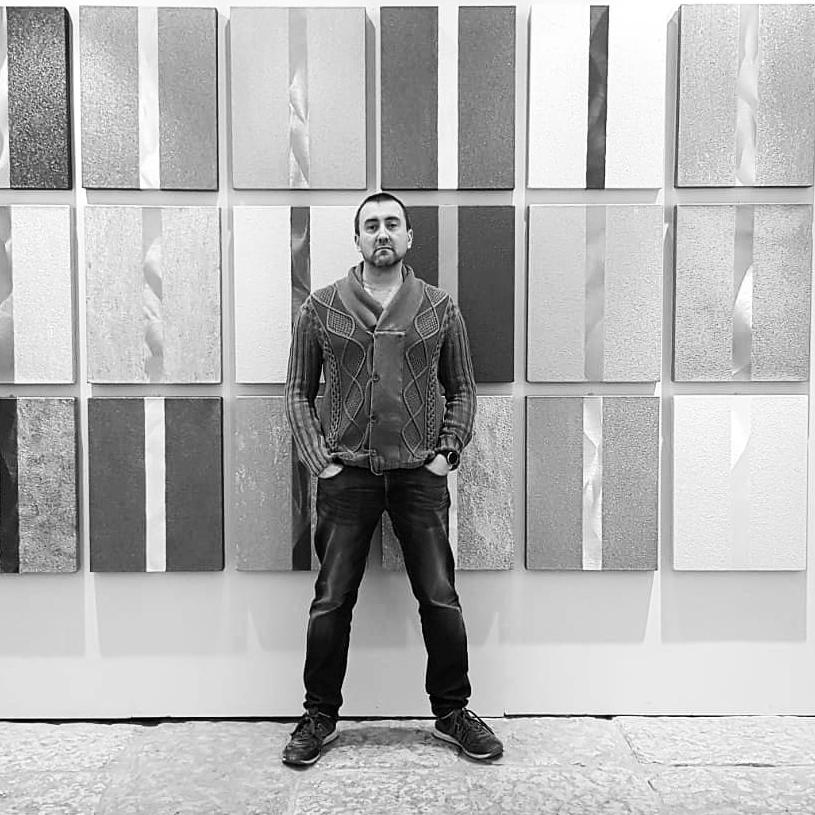
2020
Time Frame, curated by Leonardo Conti & Claudio Tovazzi, Palazzo Libera, Villa Lagarina (Trento), Italy
2018
I progetti della natura – Reload, curated by Giovanni Granzotto & Leonardo Conti, March – April 2018, National Archaelogical Museum, Mantua, Italy
2018
I progetti della natura – Reload, curated by Giovanni Granzotto & Leonardo Conti, January – February 2018, National Archaelogical Museum, Mantua, Italy
2018
White Spacescape, curated by Leonardo Conti & Sara Bastianini, PoliArt Gallery, Milan, Italy
2018
I sette sigilli, ArtVerona 2018, curated by Leonardo Conti, designed by PoliArt Gallery, Verona, Italy
2015-2016
Spazi dinamici – Spazi di luce, curated by Giovanni Granzotto & Alberto Pasini, G.R. Studio, Sacile (Pordenone), Italy
2015
Spritual Grounds, curated by Ilaria Bignotti, IAGA Contemporary Art, Cluj-Napoca, Romania
2014
Il corpo del segno, curated by Leonardo Conti, PoliArt Gallery, Rovereto (Trento), Italy
2014
Uno e molteplice, curated by Leonardo Conti, PoliArt Gallery (catalog), Milan, Italy
2012
L’orizzonte degli eventi, curated by Leonardo Conti, PoliArt Gallery, Milan, Italy
2009
Injection Painting, curated by Leonardo Conti, PoliArt Gallery, Milan, Italy
2006
L’ordine della materia, curated by Filippo Conte & Irene Disco, Galleria La Torre, Milan, Italy
GROUP EXHIBITIONS
2021
Bocconi Art Gallery, Campus Bocconi, Milan, Italy
2021
Ben Ormenese e i suoi tempi, curated by Leonardo Conti, Pinacoteca Comunale Antonio Sapone, Gaeta (Latina), Italy
2021
Martians, curated by Leonardo Conti, Zeit Gallery, Porcari (Lucca), Italy
2021
Transiti – second step, curated by Raffaella A. Caruso, Guido da Costigliole del Relais San Maurizio, Santo Stefano Belbo (Cuneo), Italy
2019
Transiti, curated by Raffaella A. Caruso, Carla Spagnuolo Gallery – Palazzo Lascaris, Turin, Italy
2019
Summertime, curated by Leonardo Conti, PoliArt Gallery, Milan, Italy
2019
Lucio Fontana e la sua ombra lunga, quelle tracce non cancellate, curated by Giovanni Granzotto & Leonardo Conti, Regional Archaelogical Museum, Aosta, Italy
2019
Lucio Fontana e i mondi oltre la tela. Tra oggetto e Pittura, curated by Giovanni Granzotto & Leonardo Conti, Municipal Gallery of Contemporary Art, Monfalcone (Gorizia), Italy
2018
Romana Design District, …diDesign, Milan, Italy
2018
Divenire Pittura, curated by Leonardo Conti & Claudio Tovazzi, PoliArt Gallery, Rovereto (Trento), Italy
2018
I piranha non sentono i sapori, curated by Guido Airoldi & Matteo Vanzan, Palazzina storica, Peschiera del Garda (Verona), Italy
2018
Salviamo il ‘900, curated by Gianni Pasquetto & Federico Martinelli, Palazzo Bottagisio, Villafranca (Verona), Italy
2017
In dialogo con Santomaso – L’astrazione emozionante, curated by Leonardo Conti, PoliArt Gallery, Milan, Italy
2017
Arteam Cup 2017, BonelliLAB, Canneto Sull’Olio (Mantua), Italy
2017
The dreamers, Debaser Gallery, Pietrasanta (Lucca), Italy
2016
The Sharper Percepition, curated by Giovanni Granzotto, GR Gallery, New York, USA
2016
Overtime. A rear-view mirror on the afternoon, curated by Dan Breaz, IAGA Contemporary Art, Cluj-Napoca,
Romania
2016
Creative eye – Arte Cinetica e Programmata, curated by Silvia Ricci, video curated by Sergio Vanni, Granelli Gallery, Castiglioncello (Livorno), Italy
2016
Fragment #4, IAGA Contemporary Art, Cluj-Napoca, Romania
2016
The White Gallery, curated by Leonardo Conti, PoliArt Gallery, Milan, Italy
2016
Fragment #5_Timeless, IAGA Contemporary Art, Cluj-Napoca, Romania
2016
Times & Genesis, curated by Olimpia Bera, designed by IAGA Contemporary Art, Art Museum, Cluj-Napoca, Romania
2013
Buongiorno Rovereto – La linea e il circolo, curated by Leonardo Conti, PoliArt Gallery, Rovereto (Trento), Italy
2013
Oggettuala #1, curated by Leonardo Conti, PoliArt Gallery, Milan, Italy
2012
Formedolci, curated by Daniele & Antonella Colossi, Sala Alabardieri, Cremona, Italy
2011
Su nero nero – Over black black, curated by Franz Paludetto, Castello di Rivara, Rivara (Turin), Italy
2011
Italian S-Object, curated by Leonardo Conti, Rossgallospace, Milan, Italy
2011
III Biennale di Anzio e Nettuno: Eco Arte, curated by Chiara Cappelloni, Dario Evola & Leonardo Carrano, different locations, Anzio & Nettuno (Rome), Italy
2009
Milano Plaza, curated by Leonardo Conti, different locations, Milan, Italy
2009
Ioèunaltro: paura, Palazzo Bottagisio, Villafranca (Verona), Italy
2008
Premio Segrete di Bocca 2008, Caffè letterario, Milan, Italy
2008
Profilo d’arte 2008, Permanente Museum, Milan, Italy
2007
Aurora Project Progress, Grafiche Verona, Verona, Italy
2007
SBAV – 150th anniversary, Palazzo della Gran Guardia, Verona, Italy
2007
Made in Italy, Gallerie Am Rothen of Wien, Austria
2007
Ioèunaltro: identità, Palazzo Bottagisio, Villafranca (Verona), Italy
2007
Out: emozione in movimento, Chiostri of S. Caterina, Finalborgo – Finale Ligure, Italy
2006
L’altra metà del lavoro, ANMIL, Rome, Italy
2006
Premio 18×24, Park hotel Brasilia, Jesolo, Venice, Italy
2006
Locus Animae, Park hotel Brasilia, Jesolo, Venice, Italy
2005
Senza trucco, Box Art Gallery, Verona, Italy
2005
Incontro scontro, PaciArte gallery, Brescia, Italy
2005
XX giornata mondiale della gioventù, travelling exhibition, Rome, Florence, Venice, Genoa, Bari, Palermo, Vittoria, Naples, Italy; Köln, Germany
2005
La percezione della libertà, Castello Scaligero, Villafranca (Verona), Italy
2004
Burned children of America, Villa Benzi Zecchini Foundation, Caerano S. Marco (Treviso), Italy
2004
Premio Città di Novara, ex Riserie, Novara, Italy
2002
Le stanze di moscacieca, Palazzo Bottagisio, Villafranca (Verona), Italy
2002
Dieci artisti da riconoscere, Show Room Telemarket, Milan, Italy
2002
4700 PROJECT, Casa di Tolleranza, Milan, Italy
2002
86.ma collettiva (86th group show), Bevilacqua La Masa Foundation, Venice, Italy
2002
L’assenzio, Auditorium, Villafranca (Verona), Italy
AWARDS
2017
Arteam Cup 2017, BonelliLAB, Canneto Sull’Olio, Mantua, Italy
2009
CO.CO.CO – Como contemporary contest 09, mentioned work, Como, Italy
2008
Premio Segrete di Bocca, selected work, Bocca Library, Milan, Italy
2008
Premio Profilo d’arte 2008, selected work, Permanente Museum, Milan, Italy
2006
Premio Arte 2006, work selected for semi-finals, Milan, Italy
2005
Siamo venuti per adorarlo – Concorso artistico per la XX GMG, servizio nazionale per la Pastorale Giovanile, Conferenza Episcopale Italiana, Unione Cattolica Artisti Italiani – Special mention of the Jury and Medal of merit, Rome, Italy
2005
Premio Palmaria Giovane 2005 – Arte, mentioned work, Porto Venere (La Spezia), Italy
2005
5° Competition for works of small size 18.24, artistic circle, first place for abstract painting, Jesolo (Venice), Italy 2004
IV National prize for painting and sculpture “Città di Novara”, winner of Targa high school State Art “F. Casorati”, Novara, Italy
ART FAIRS
2023
MoBU Art Fair, Bucharest, Romania 2022
Luxembourg Art3F, Luxembourg 2022
BAF, Bergamo, Italy
2019
BAF, Bergamo, Italy
2019
GrandArt, Milan, Italy
2019
ArtVerona, Verona, Italy
2018
BAF, Bergamo, Italy
2018
ArtVerona – solo show I sette sigilli, Verona, Italy
2018
GrandArt, Milan, Italy
2017
Arte Fiera, Bologna, Italy
2017
ArtVerona, Verona, Italy
2017
BAF, Bergamo, Italy
2017
GrandArt, Milan, Italy
2017
Arte Fiera, Padua, Italy
2016
Arte Fiera, Bologna, Italy
2016
Liste, Berlin, Germany
2016
ArtVerona, Verona, Italy
2016
Arte Fiera, Padua, Italy
2016
Innsbruck art fair, Innsbruck, Germany
2015
Arte Fiera, Bologna, Italy
2015
MiArt, Milan, Italy
2015
ArtVerona, Verona, Italy
2015
BAF, Bergamo, Italy
2015
NAF, Naples, Italy
2015
Art Athina, Athene, Greece
2015
Affordable Art Fair, Hamburg, Germany
2014
STEP 09, (solo show) Milan, Italy
2014
ArtVerona, Verona, Italy
2014
BAF, Bergamo, Italy
2013
IX ArtVerona, Verona, Italy
2013
BAF, Bergamo, Italy
2012
VIII ArtVerona, Verona, Italy
2012
BAF, Bergamo, Italy
2011
BAF, Bergamo, Italy
2010
VI ArtVerona, Verona, Italy
2010
MiArt, Milan, Italy
2010
BAF, Bergamo, Italy
2009
MiArt, Milan, Italy
2007
Genoa art fair, Genoa, Italy
2007
Parma art fair, Parma, Italy
2007
III ArtVerona, Verona, Italy
2006
Genoa art fair, Genoa, Italy
2006
Padova art fair, Padua, Italy
2006
II ArtVerona, Verona, Italy
2005
ArtVerona, Verona, Italy
2004
Vicenza art fair, Vicenza, Italy
2004
Padova art fair, Padua, Italy
PUBLICATIONS
2016
Overtime. A rear-view mirror on the afternoon, curated by Dan Breaz, graphic design curated by Sabina Elena Dragomir, web catalogue
2016
Creative eye – Arte Cinetica e Programmata, curated by Silvia Ricci, photo by Carlo Marzocchi, con-fine edizioni, Monghidoro (Bologna), Italy
2016
Fragment #4, web catalogue
2015
Spiritual Grounds, curated by Ilaria Bignotti, A&M Graphis Editura, Cluj-Napoca, Romania
2015
Spazi dinamici – Spazi di luce, curated by Giovanni Granzotto and Alberto Pasini, Dario De Bastiani Editore, Treviso, Italy
2015
The Sharper Percepition – Dynamic Art, Optical and beyond, curated by Giovanni Granzotto and Alberto Pasini,
Dario De Bastiani Editore, Treviso, Italy
2014
Uno e molteplice, by Marcello De Angelis and Leonardo Conti, artist book – 120 copy signed & numbered
2014
Genesia, by Marcello De Angelis and Leonardo Conti, artist book – 81 copy signed & numbered
2009
Milano Plaza, by Leonardo Conti, Vanillaedizioni, Albissola Marina (Savona), Italy
2008
Profilo d’arte 2008, Federico Motta Editore, Milan, Italy
2008
Segrete di Bocca III, Tipografia monotipia Cremonese, Cremona, Italy
2007
Aurora Project Progress 2007, Grafiche Aurora, Verona, Italy
2007
Ioèunaltro: Identità, curated by Moscacieca – cultural association, Italy
2007
Out: emozione in movimento, curated by Fuoriarte – cultural association, Litografia Viscardi, Alessandria, Italy
2006
L’altra metà del lavoro.,Tipolitografia INAIL, Milan, Italy
2006
L’ordine della materia, curated by Irene Disco, Vanillaedizioni, Albissola Marina (Savona), Italy
2005
No magazine. Senza trucco, Grafiche Tamellini Printing, Legnago (Verona), Italy
2004
Arte a Verona. Vent’anni di una tipografia, curated by Enzo and Raffaello Bassotto, Grafiche Aurora, Verona, Italy
IAGA Contemporary Art
This catalogue was published on the occasion of the exhibition:
Marcello De Angelis
Ask The Skin
First edition, 2023 – 100 copies, 20 copies are signed by the artist.
©IAGA Contemporary Art Str. Cloşca, Nr. 9/11
Cluj–Napoca, Romania www.iagacontemporaryart.com info@iagacontemporaryart.com
In partnership with:
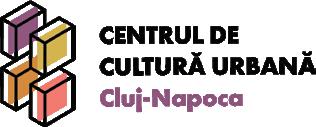
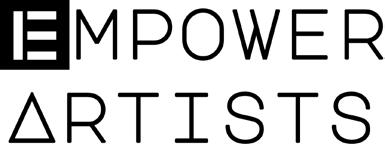
Under the patronage of:
From an idea by Alberto Perobelli
Member of:
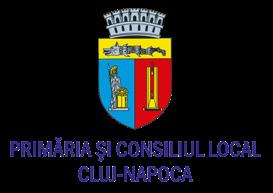
Project manager Alberto Perobelli Rosalba Di Pierro
Texts by Ilaria Bignotti
Photo credits Ștefan Bădulescu
Graphic design Anna Azzollini
Cover illustration Saut dans le vide 2021, acrylic - mould & injection painting on canvas 80x105x5 cm
